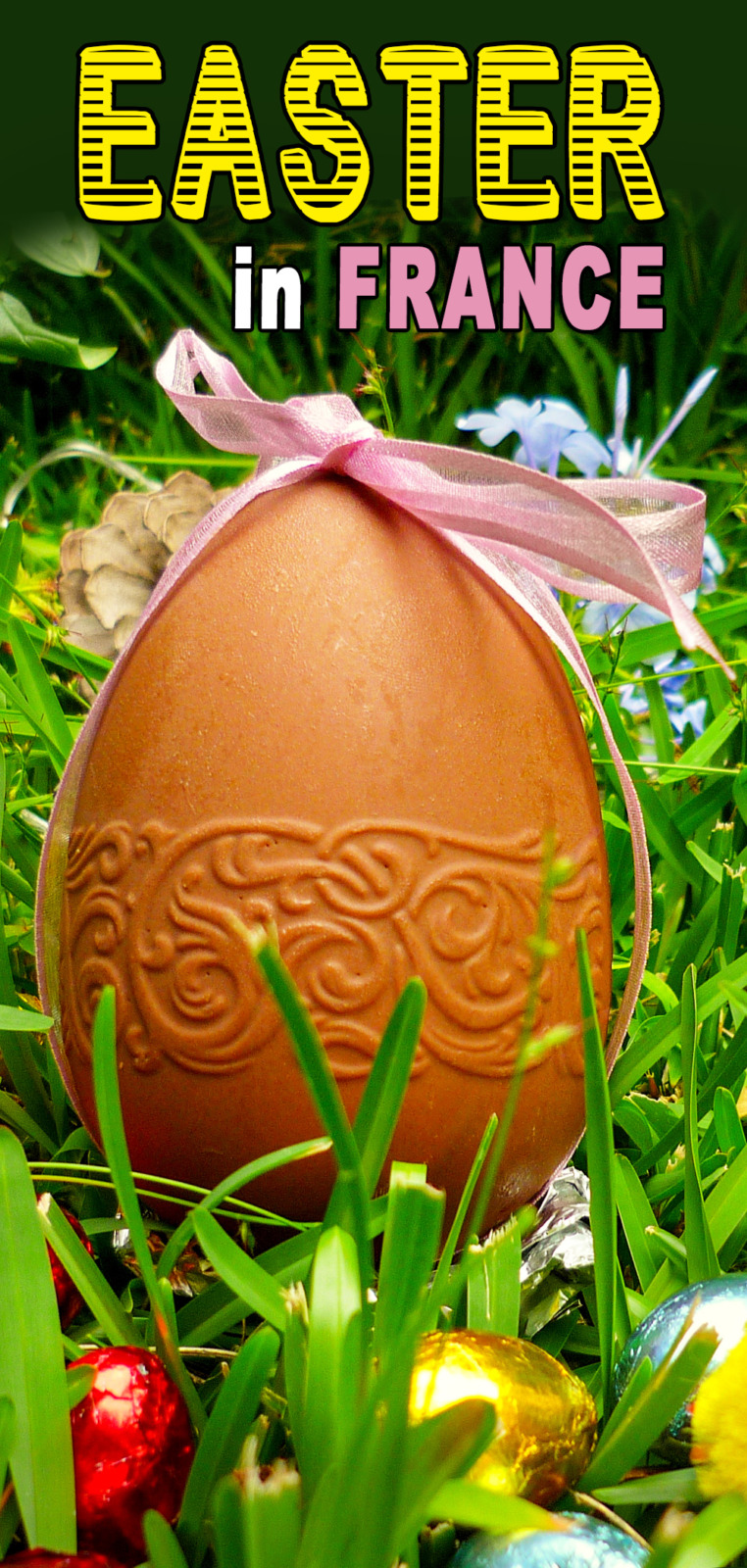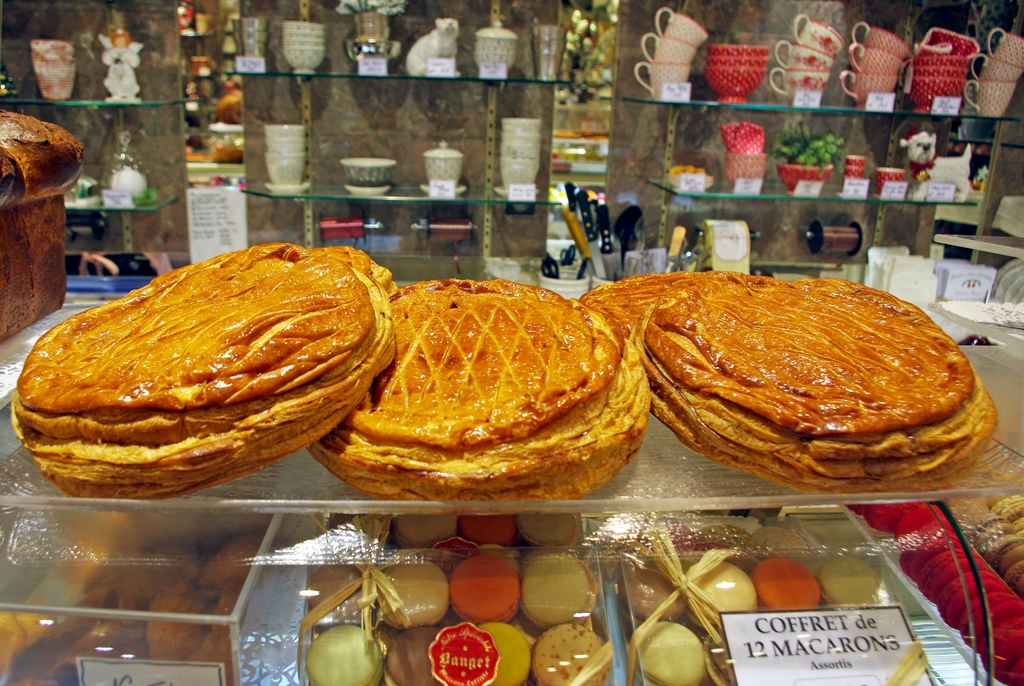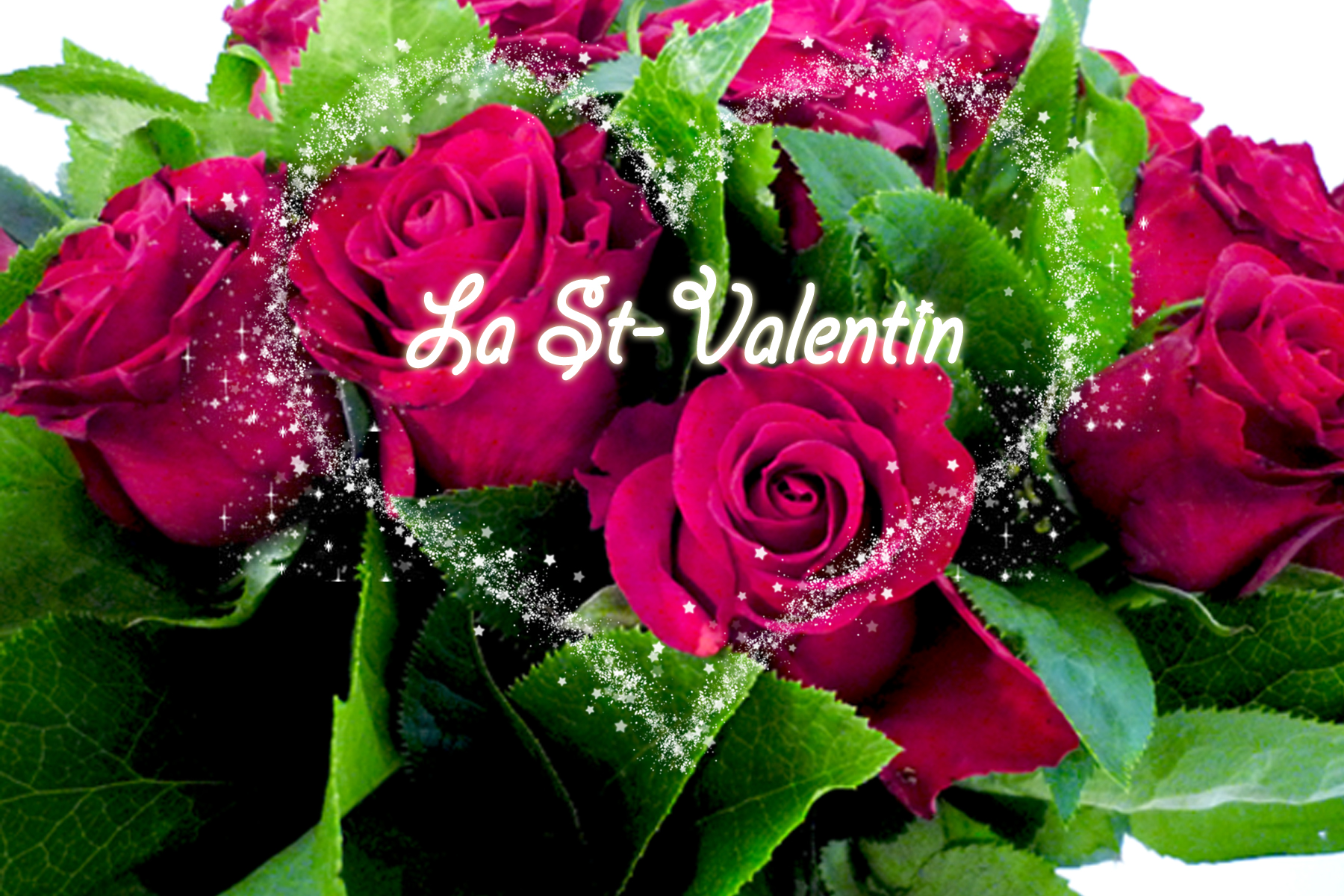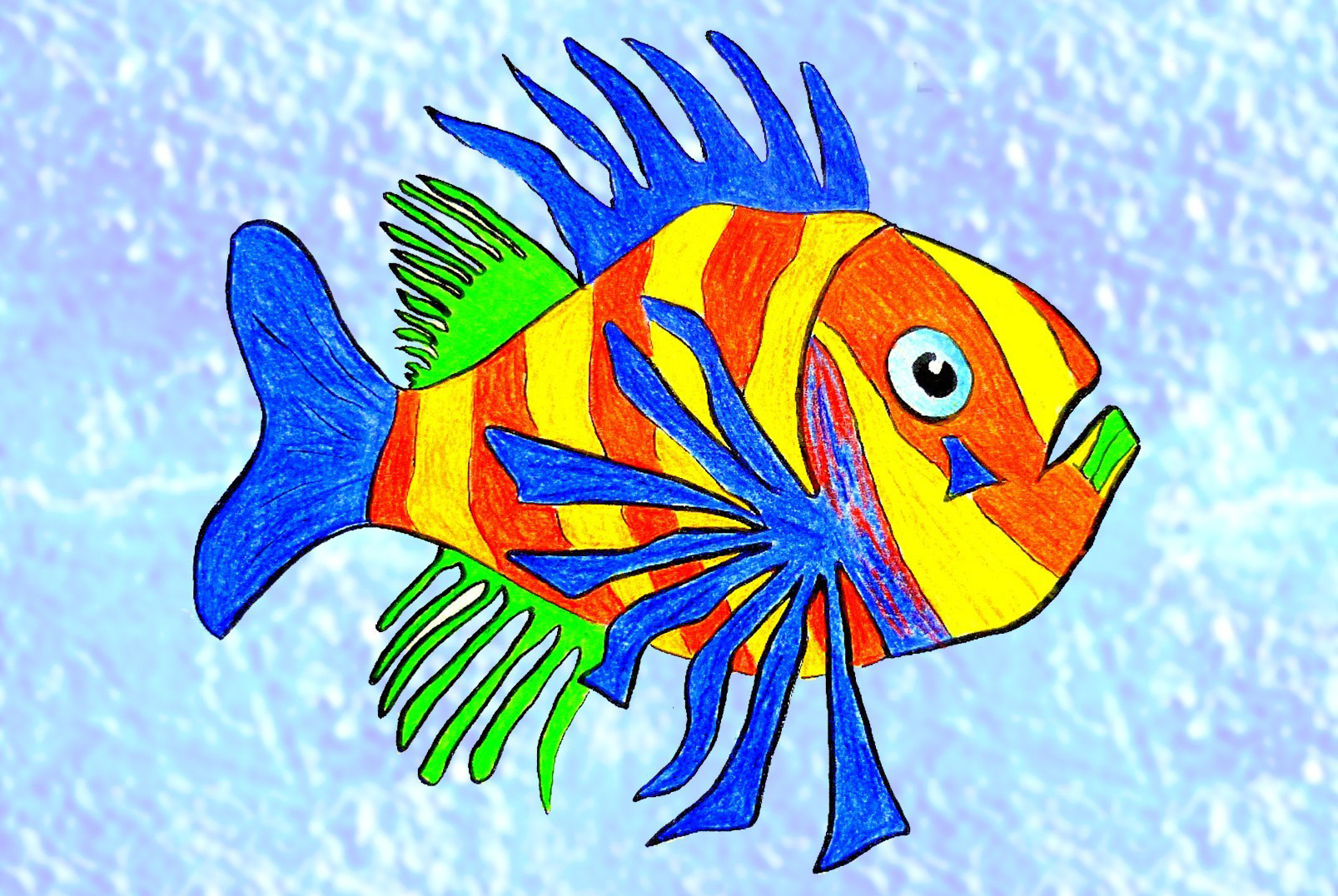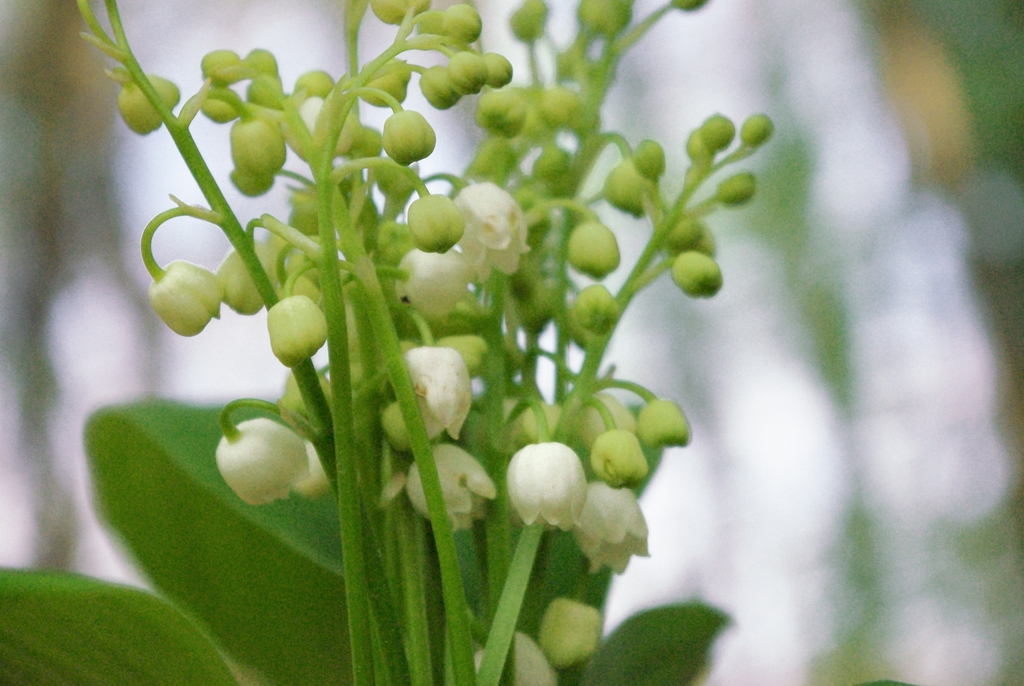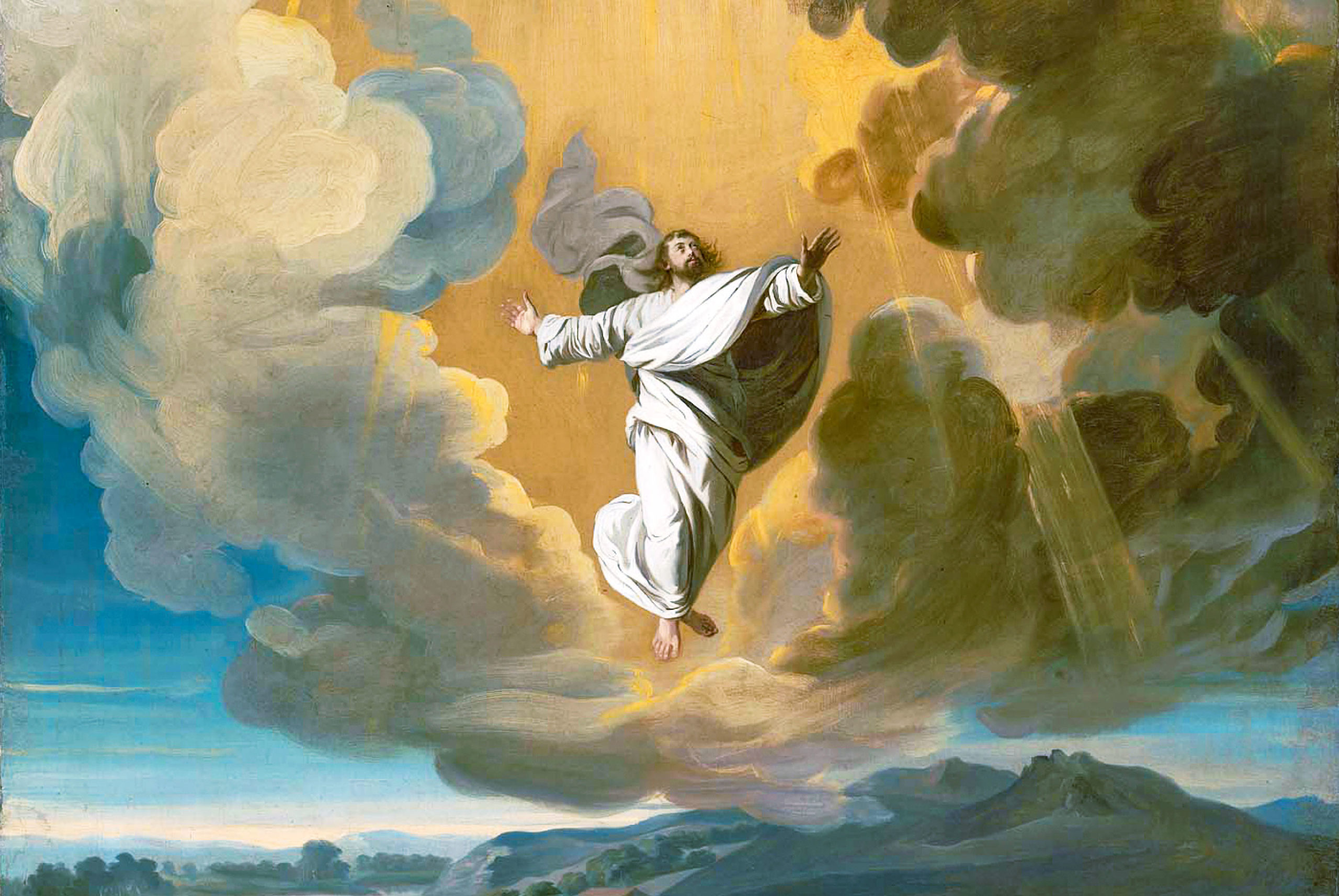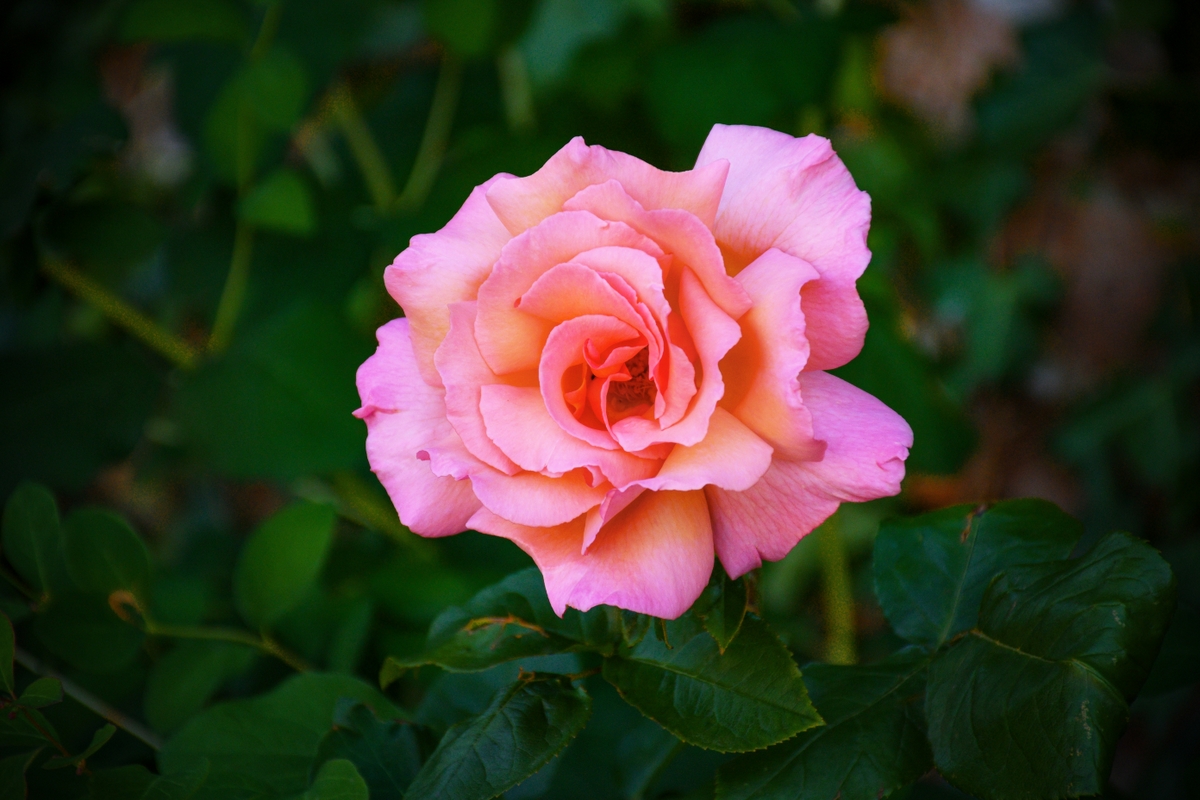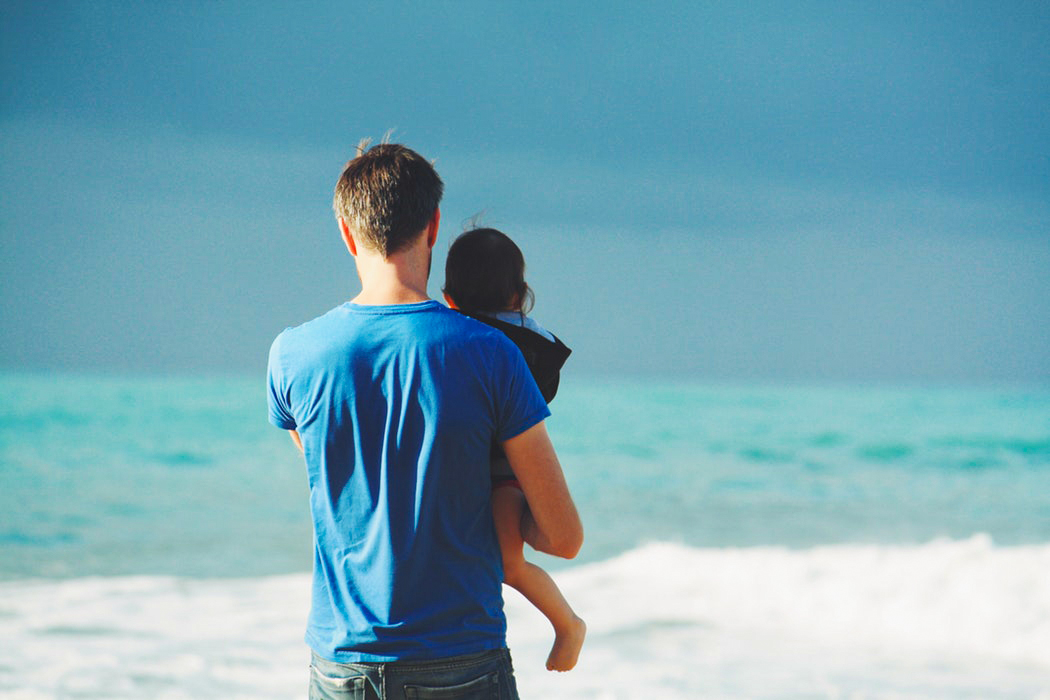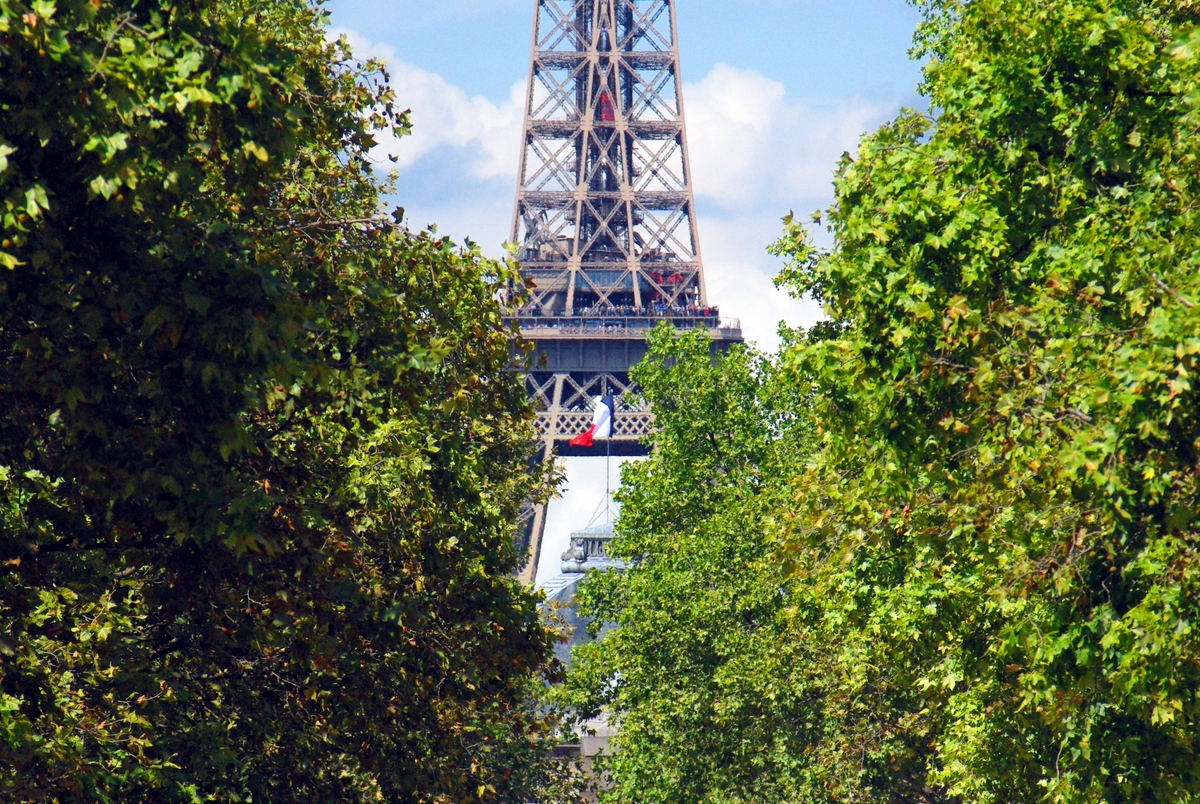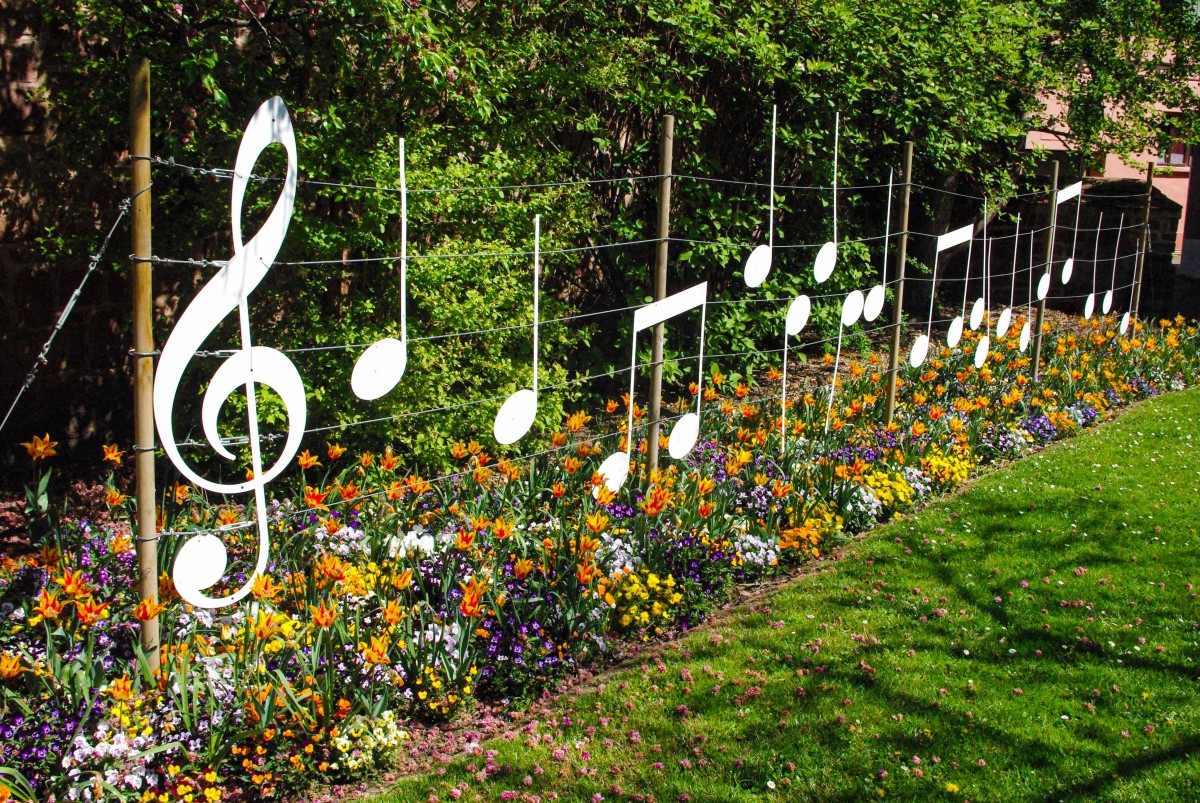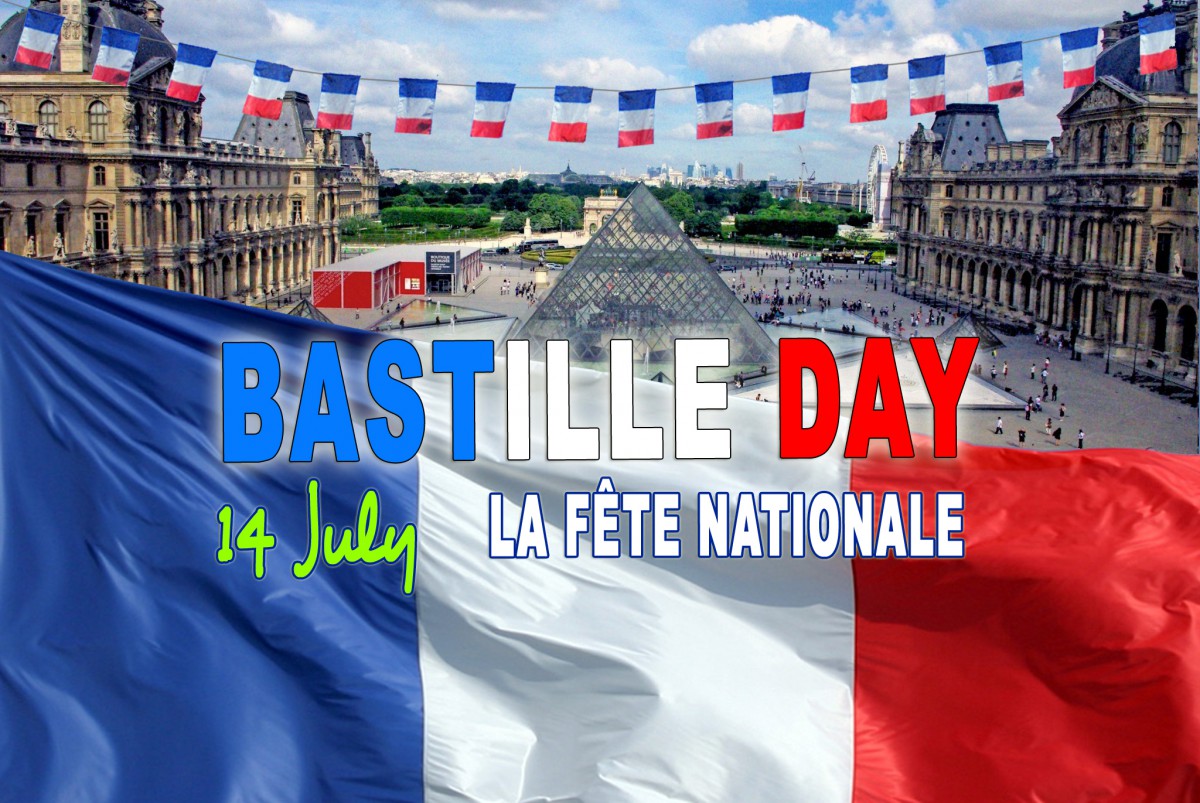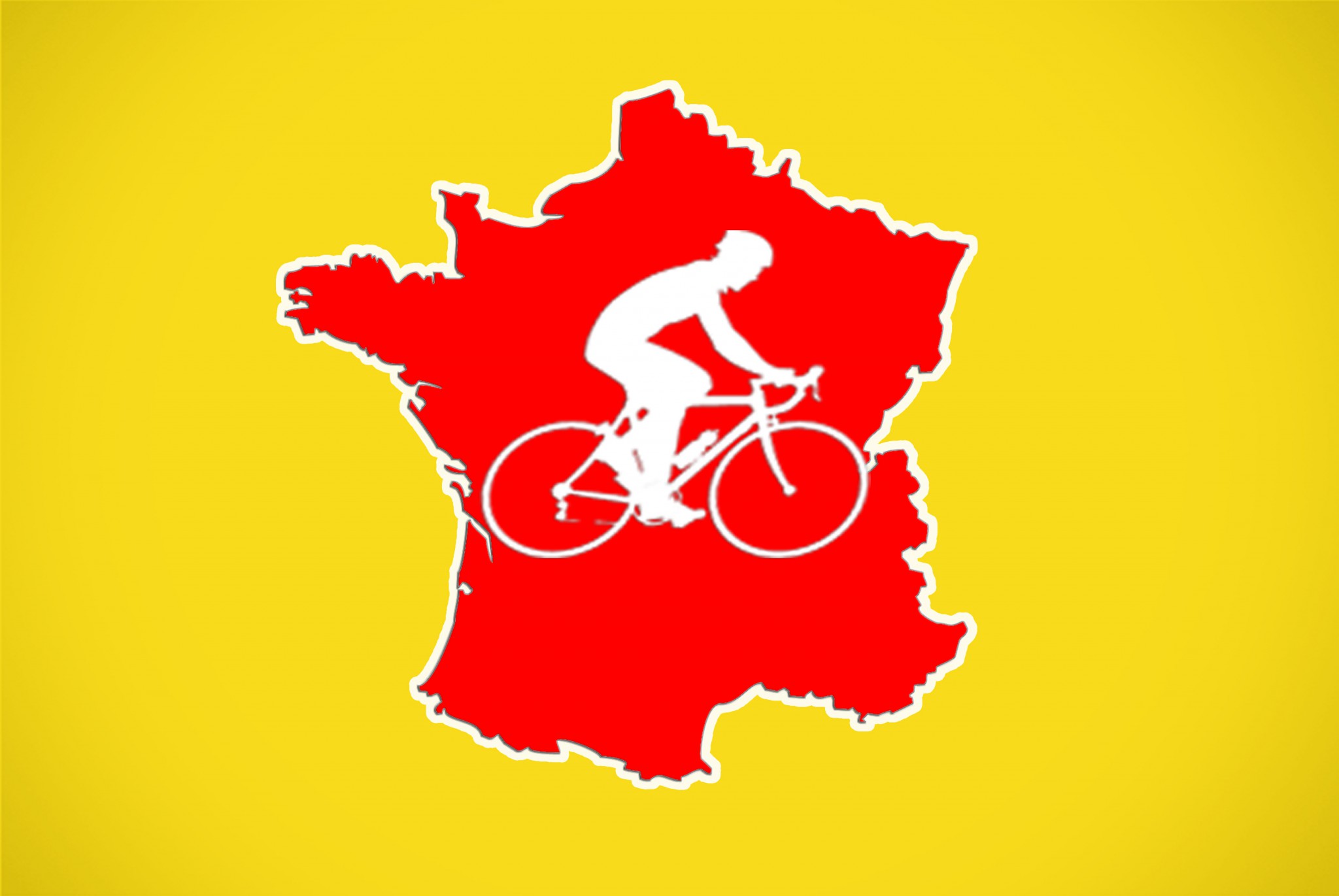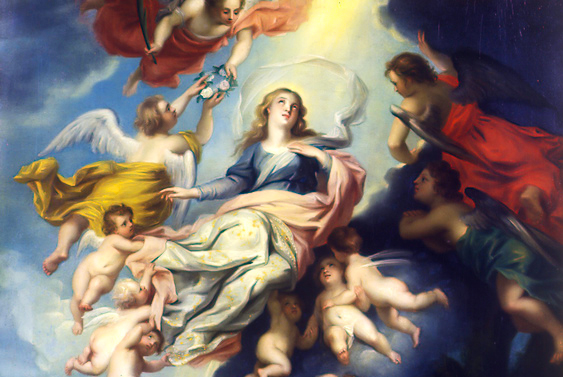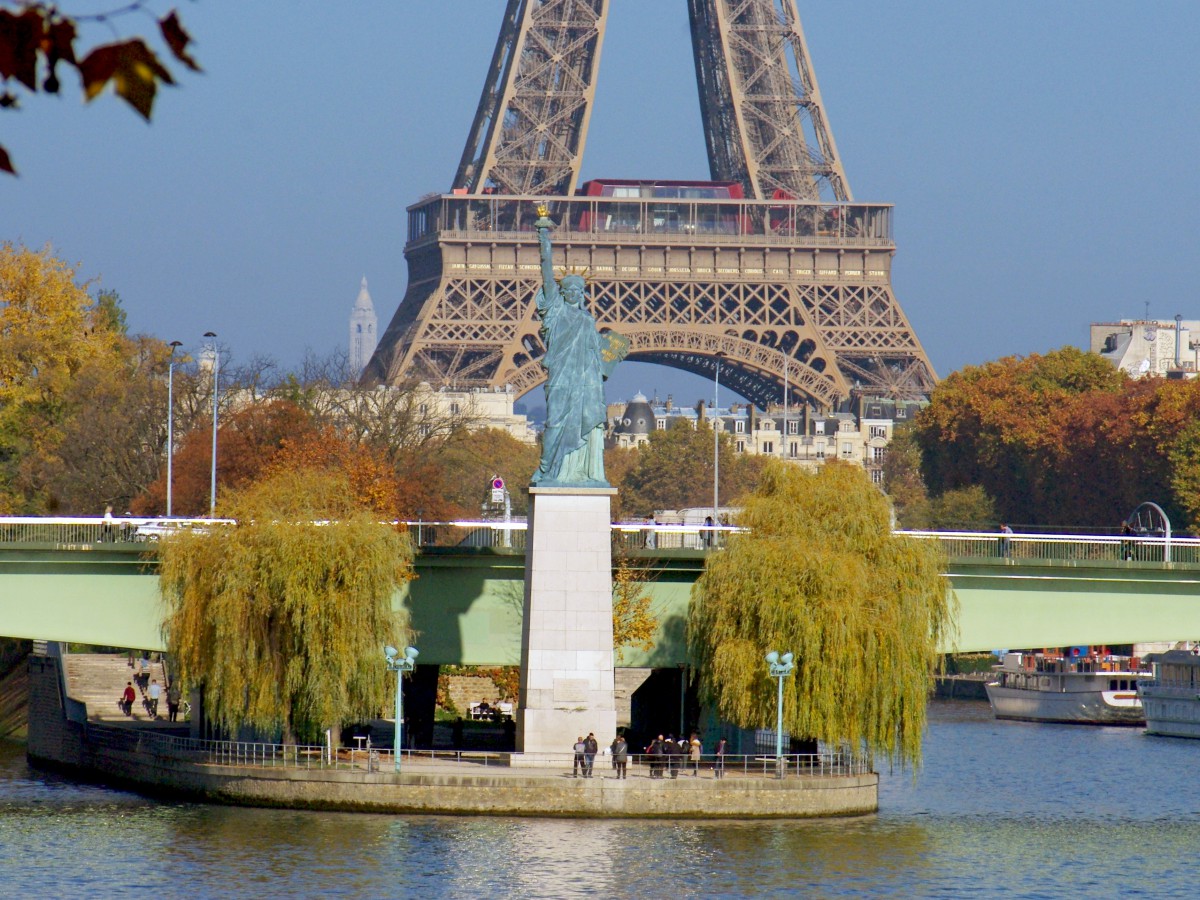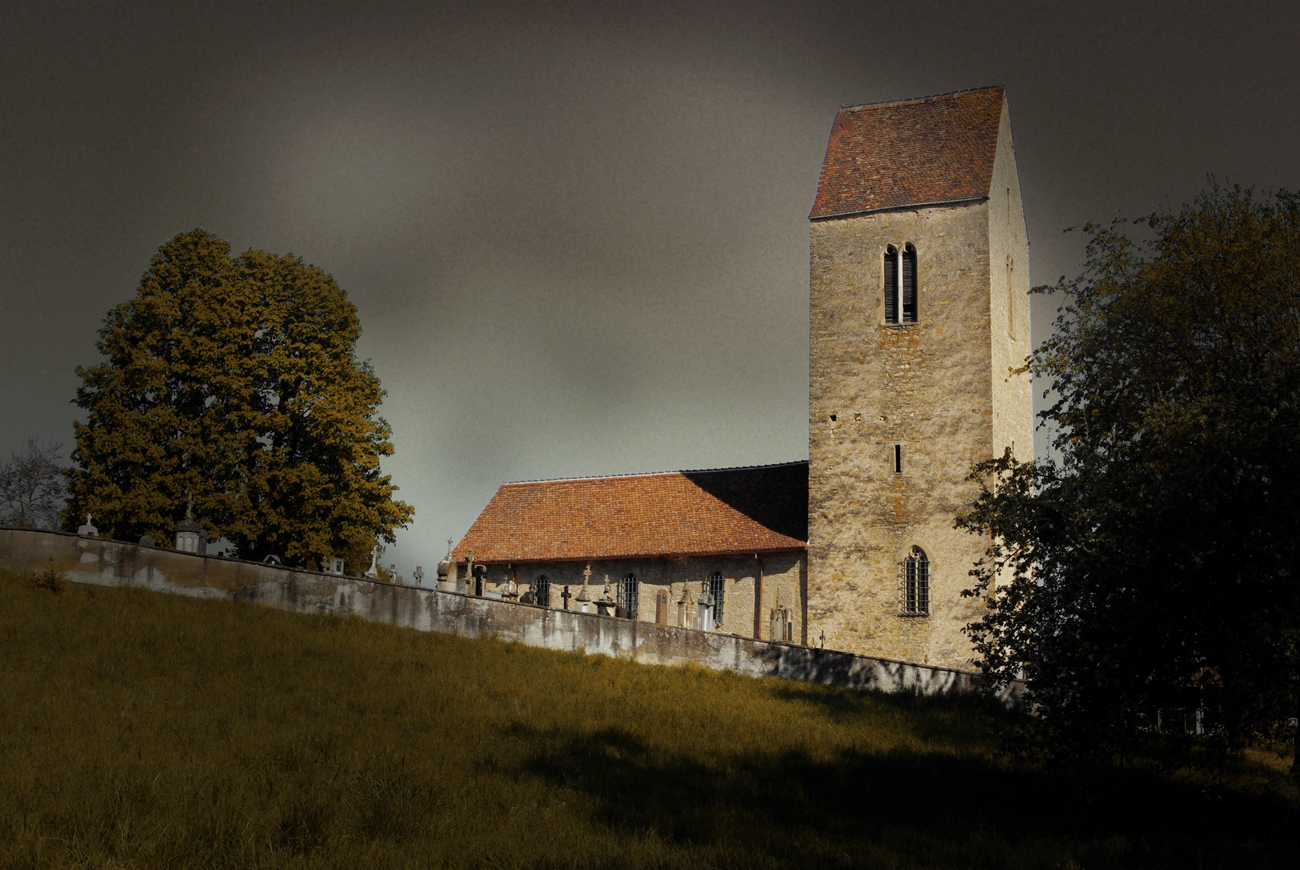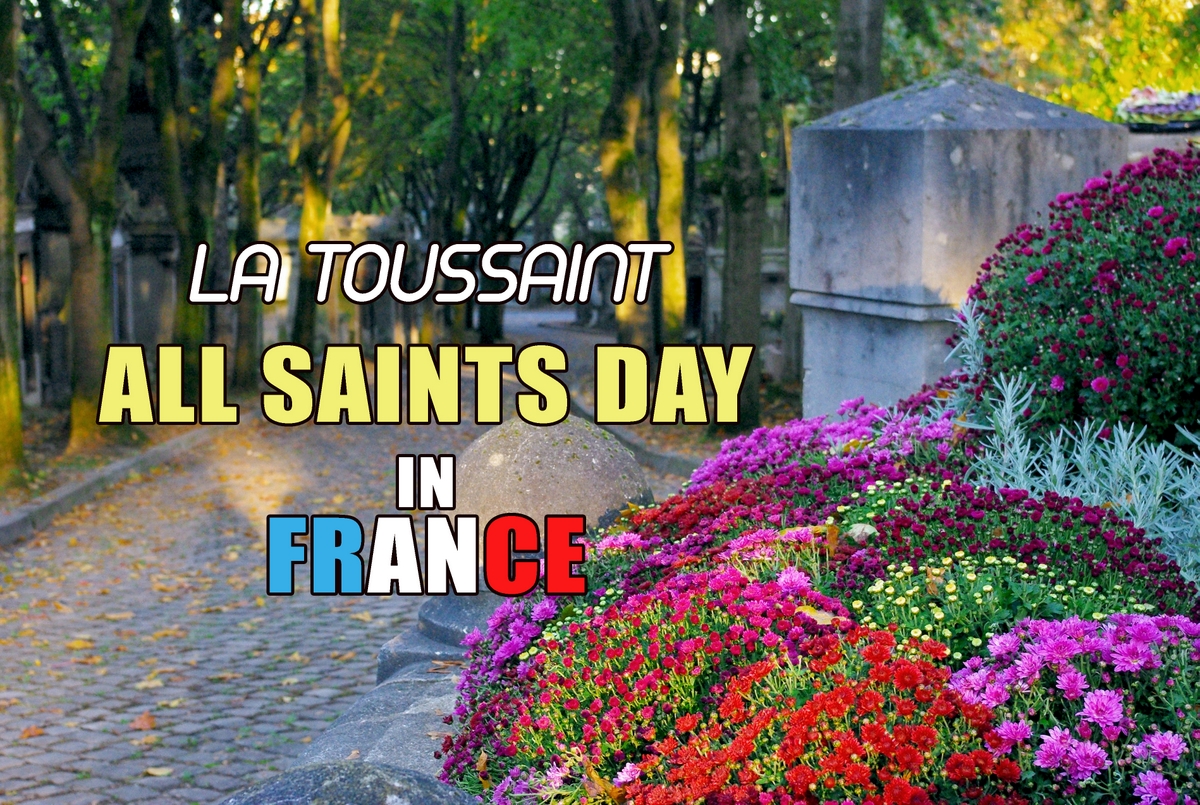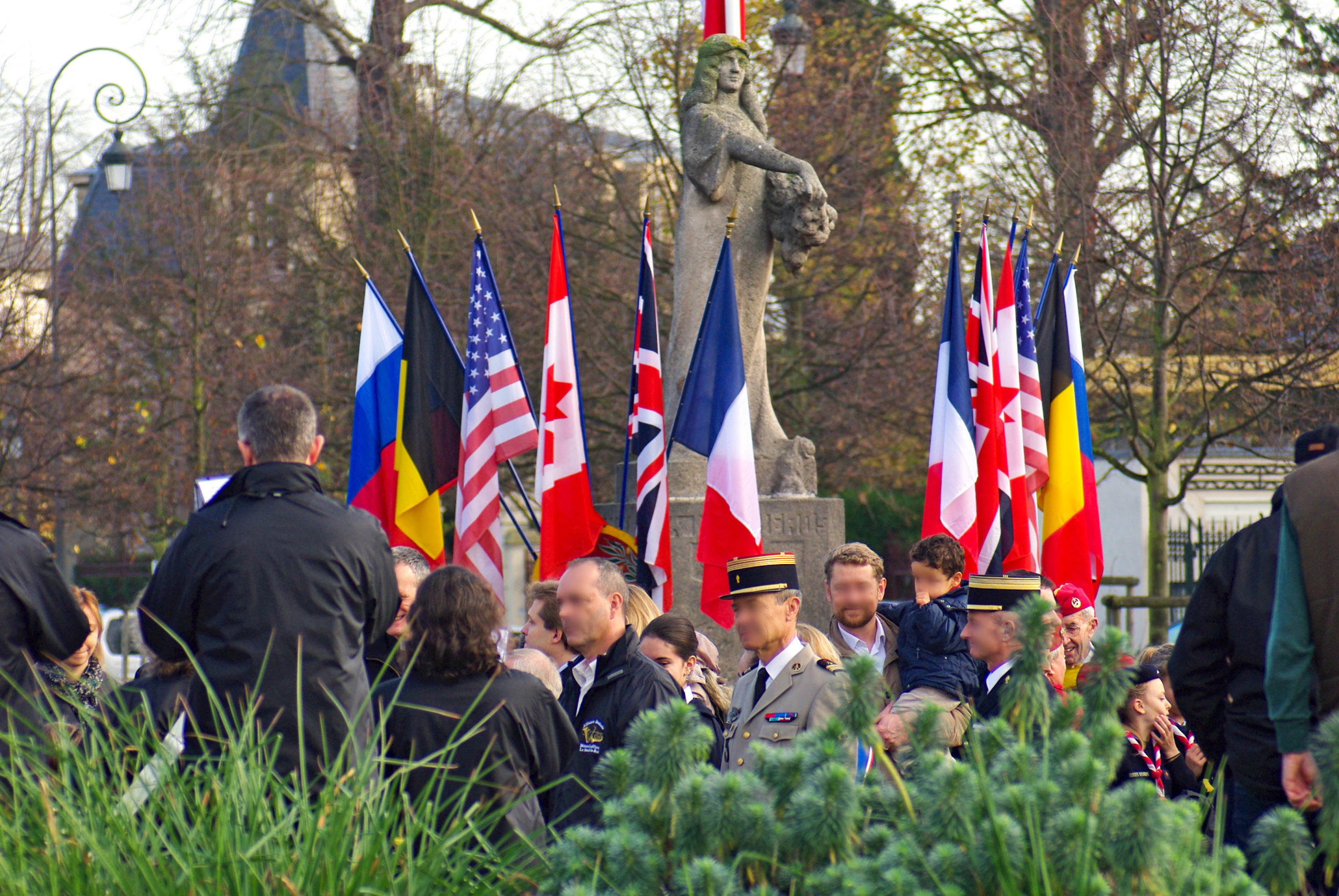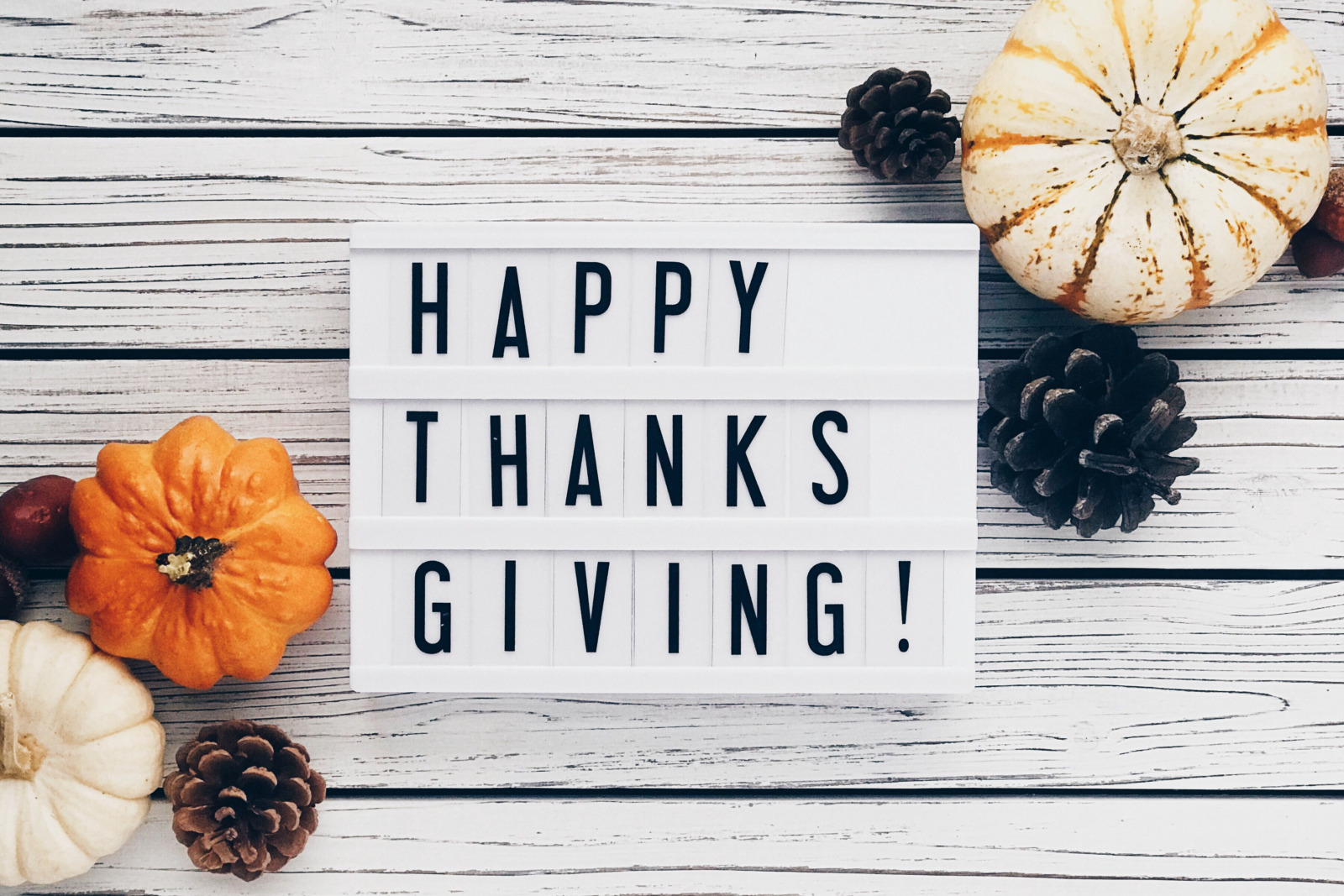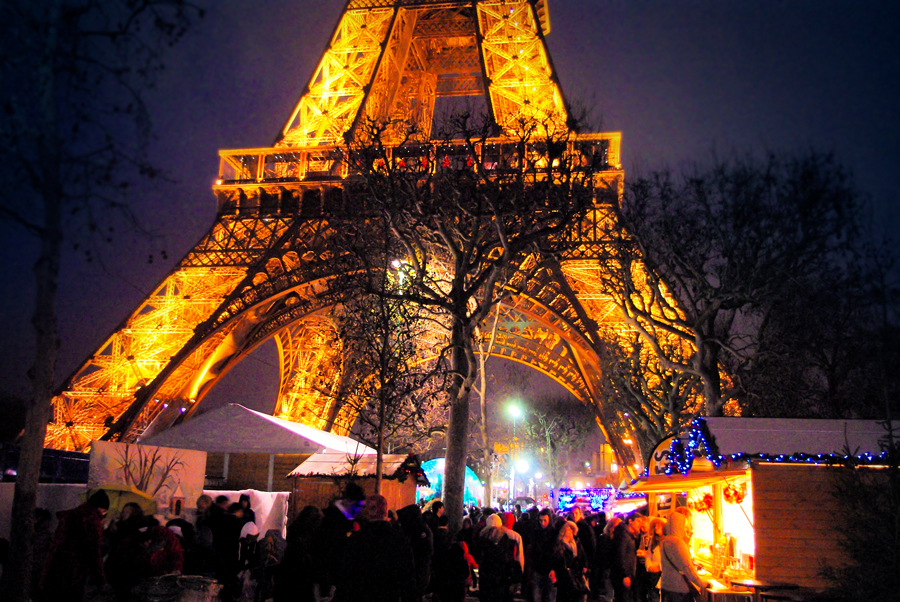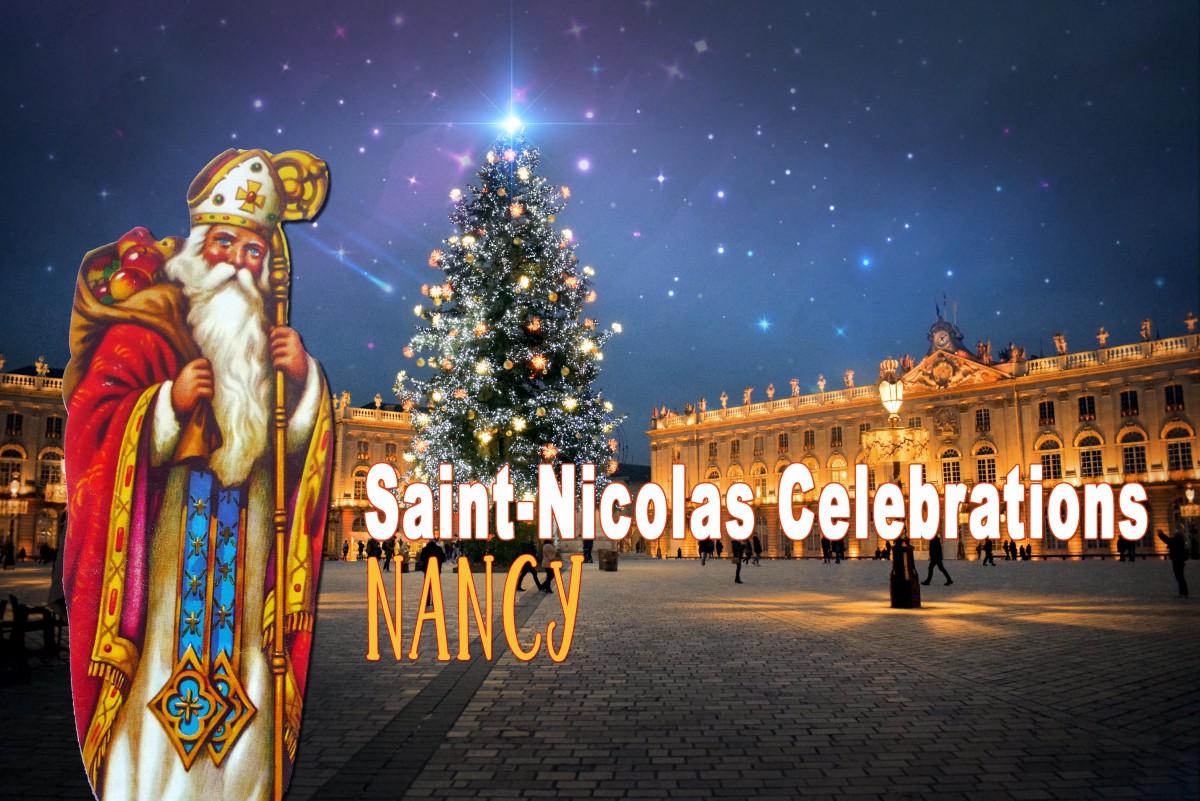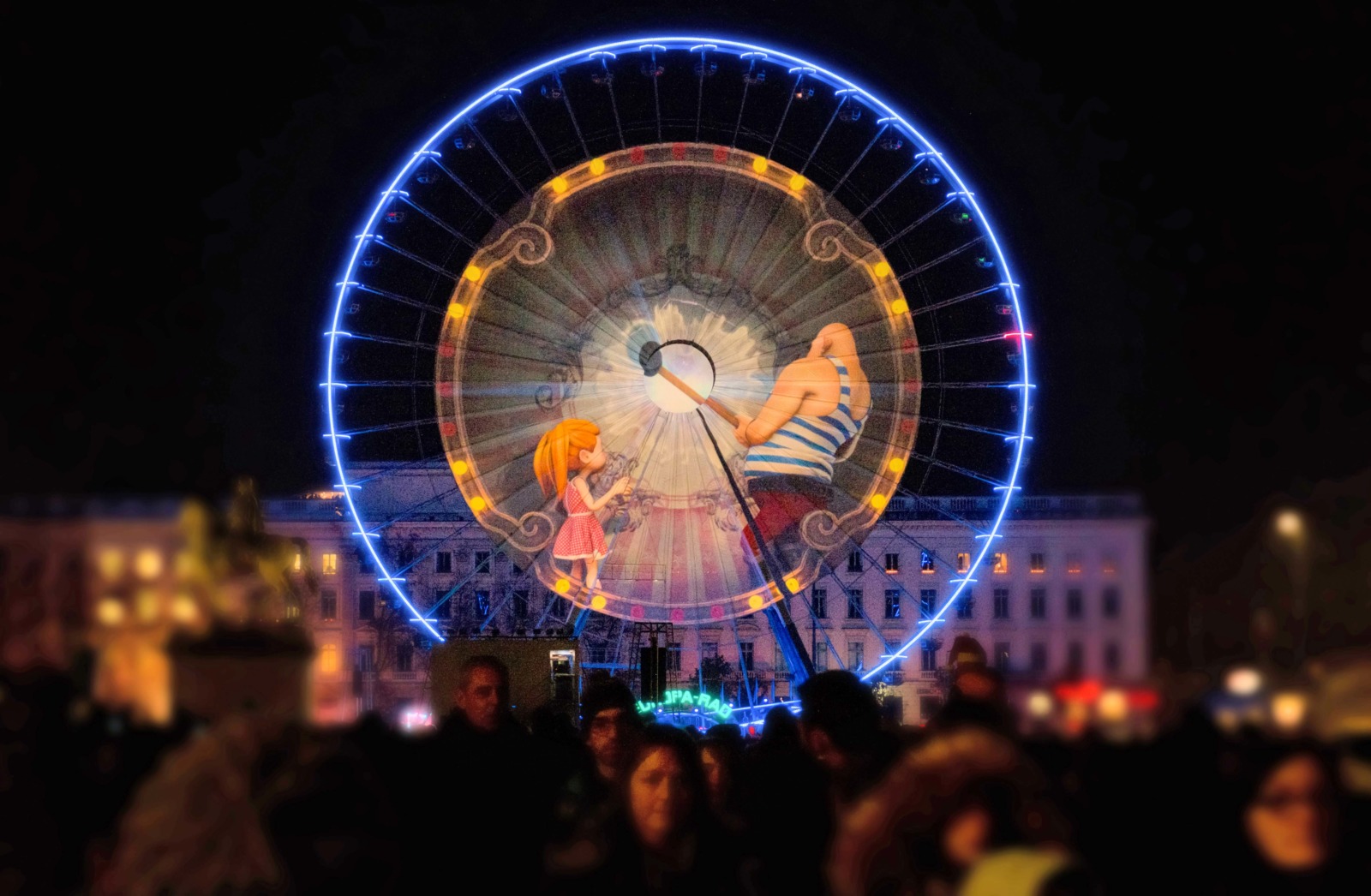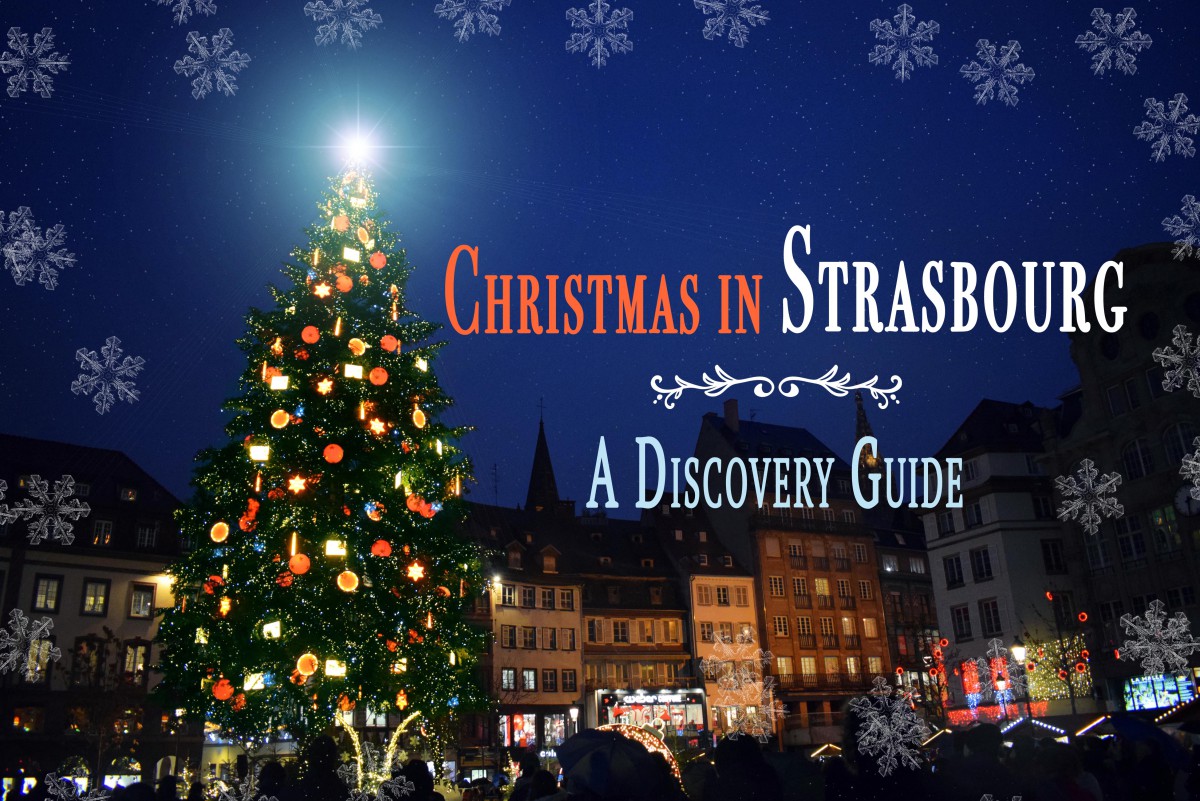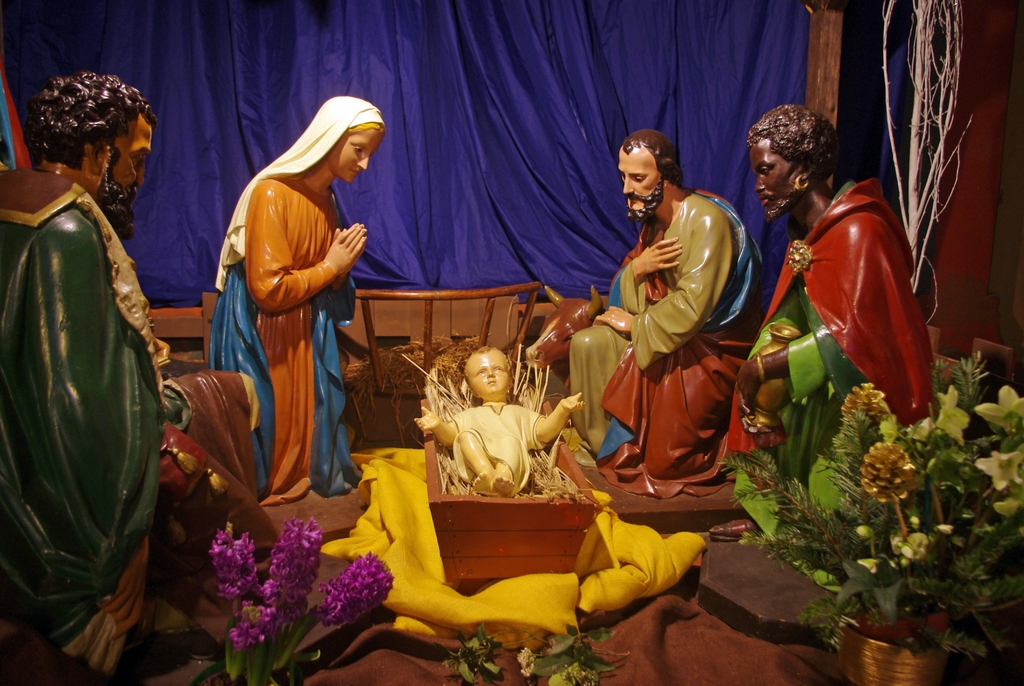For many, Easter in France evokes a certain sweetness of life, a springtime celebration that is both childlike and family-friendly. The great Easter Sunday family meal gathers the guests around a lamb.
It is the most important feast in the Christian calendar for both Catholic and Protestant believers.
What are the origins of Easter?
Where do French Easter traditions come from?
What are its symbolism and meaning?
Why do we eat chocolate eggs, bunnies or bells?
This is what we’re going to learn in this comprehensive article!
Watch our short video explaining Easter in France:

What happened at Easter?
Long before chocolate bunnies, Easter is the Christian feast whose meaning, for believers, is the year’s most important event. It commemorates the Resurrection of Jesus Christ on the third day after his crucifixion on Good Friday.
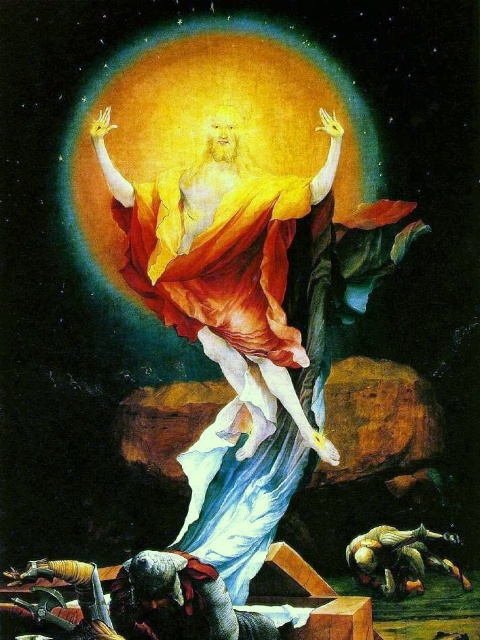
According to Wikipedia, there is no consensus regarding the exact date of the crucifixion of Jesus, although biblical scholars generally agree that it was:
- on a Friday on or near Passover,
- during the governorship of Pontius Pilate (the Roman governor of Roman Judaea who ruled AD 26–36).
Various approaches have been used to estimate the year of the crucifixion, including:
- the canonical Gospels,
- the chronology of the life of Paul,
- as well as different astronomical models.
Scholars have provided estimates in the range of 30–33 AD.
Easter in France and the Catholic liturgical calendar
As we’ve seen previously, Easter celebrates the Resurrection of Jesus Christ on the third day after His Crucifixion on Good Friday, marking the end of the youthful period of Lent (Carême).
Easter is the oldest Christian celebration and the central element of the Christian faith. For nearly 2,000 years, it has become the highlight of the Catholic liturgical calendar, from Mardi Gras to Pentecost Sunday.

The liturgical calendar was gradually built up from the 4th century around the date of the celebration of Easter. First, the triduum (three days before Easter) became a time of fasting, and then the celebration was extended to Holy Week as early as 389.
The Holy Week in France
For Catholics, Holy Week (Semaine Sainte) is the week before Easter and the last part of Lent. It is intended to commemorate the Passion of Christ.
It includes the Easter Triduum (Triduum pascal) of the Passion and Resurrection of Christ, which begins on the Thursday evening of this week and ends on the evening of Easter Sunday. These three days are the culmination of the liturgical year because it was through his sacrifice that Christ destroyed death, and it was through his resurrection that he restored life.
Palm Sunday in France
Holy Week opens on Palm Sunday (Dimanche des Rameaux), considered one of the twelve great feasts of the liturgical year. It is a festive Sunday because it celebrates Christ’s triumphal entry into Jerusalem, welcomed by the people holding palms. The faithful bring palm branches on this day, and the priest blesses them. However, Jesus’ coming to Jerusalem marks the beginning of the Passion of Christ, towards which he voluntarily moves.
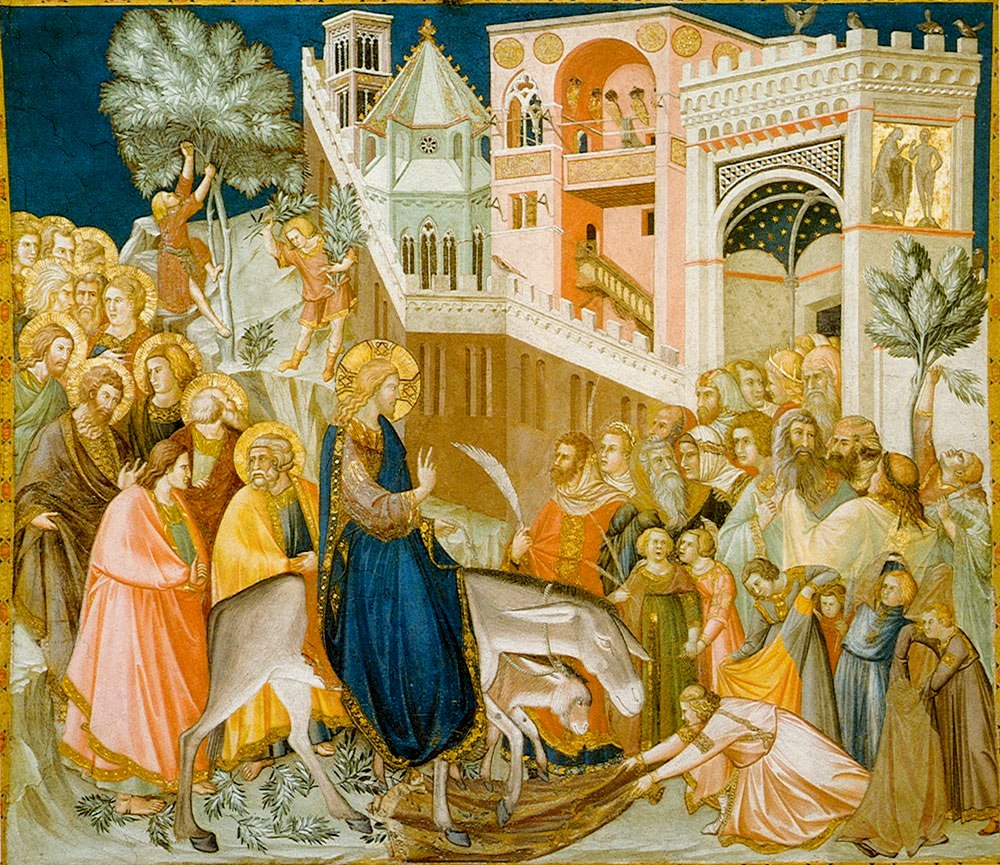
From Holy Monday to Holy Wednesday, there is no special ceremony in the Catholic Church, except possibly the Chrism Mass (la messe chrismale), which may occur on Tuesday morning. During this service, the bishops bless the holy oils and make the sacred chrism in the cathedrals.
Maundy Thursday in France
Christians commemorate the First Holy Communion on Maundy Thursday (Jeudi Saint). This day is a significant moment in Christ’s ministry, recorded in the four Gospels:
- Matthew 26, 17-30,
- Mark 14, 12-25,
- Luke 22, 7-23, and
- John 18, 1-11.
For Catholics, it commemorates the institution by Jesus Christ of the sacrament of the Eucharist at the Last Supper. This is the last meal taken with his disciples before his arrest.
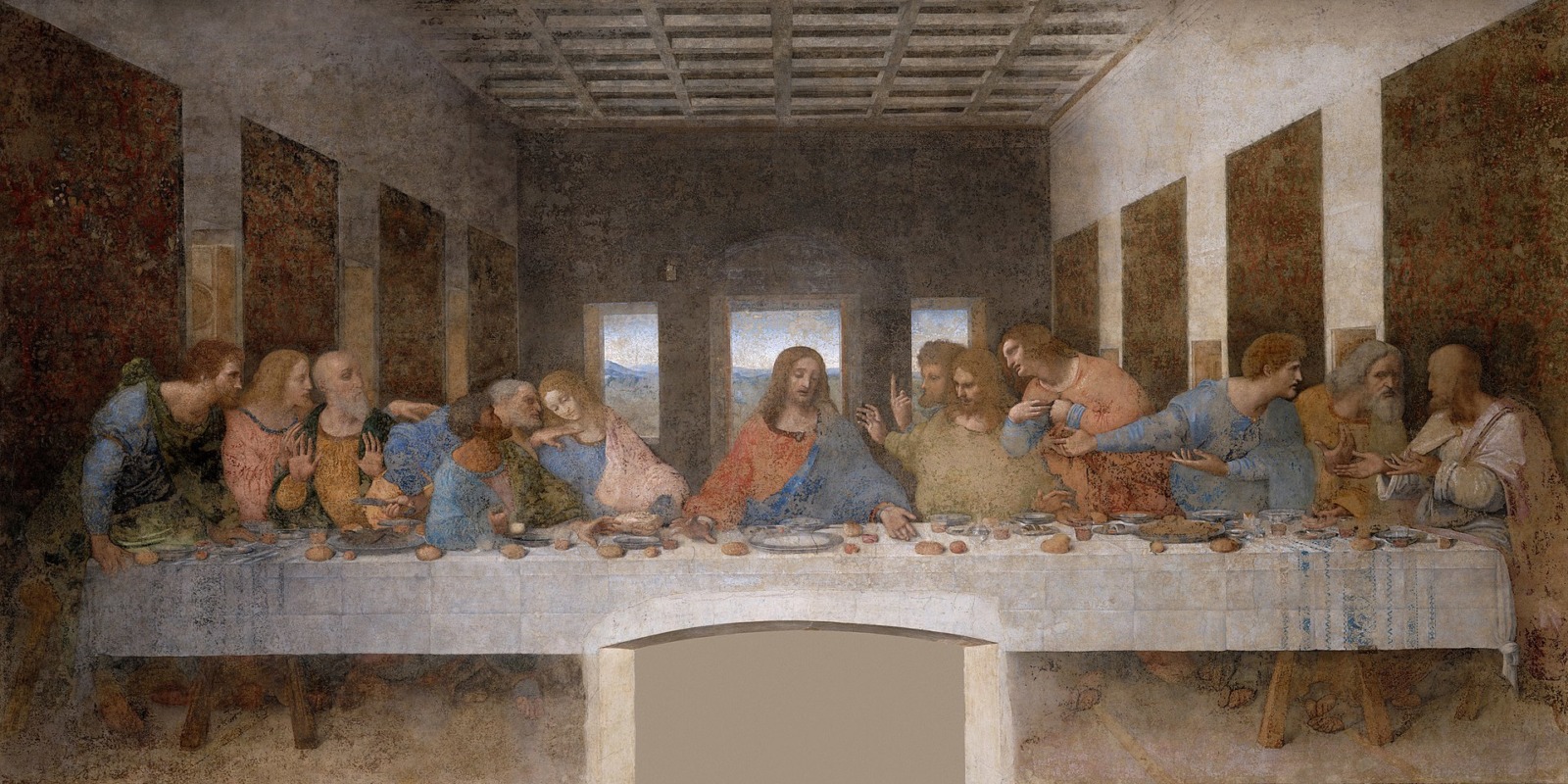
During the vespers mass on Maundy Thursday, a special ceremony occurs: washing the feet or Mandatum. Perpetuating Jesus’s gesture with his twelve apostles (John 13, 1-15), twelve parishioners have their right foot washed by the priest during the evening mass.
As for the Protestants, Reformers (especially Calvin) did not think much of the foot-washing ritual. It is, therefore, absent from most Protestant liturgies.
In Alsace, Protestant families used to eat spinach and eggs on this day. Maundy Thursday was known as Greendonnerschdaa (i.e. Green Thursday). Thus, one could see a crowd of housewives with spinach in their bags at the market held on Tuesdays in Strasbourg!
Good Friday and the Crucifixion
On Good Friday (Vendredi Saint), Christians commemorate the Passion and death of Jesus on the Cross. The Church is in mourning, so there is no mass. It is also a day of fasting and abstinence from meat and sausages.
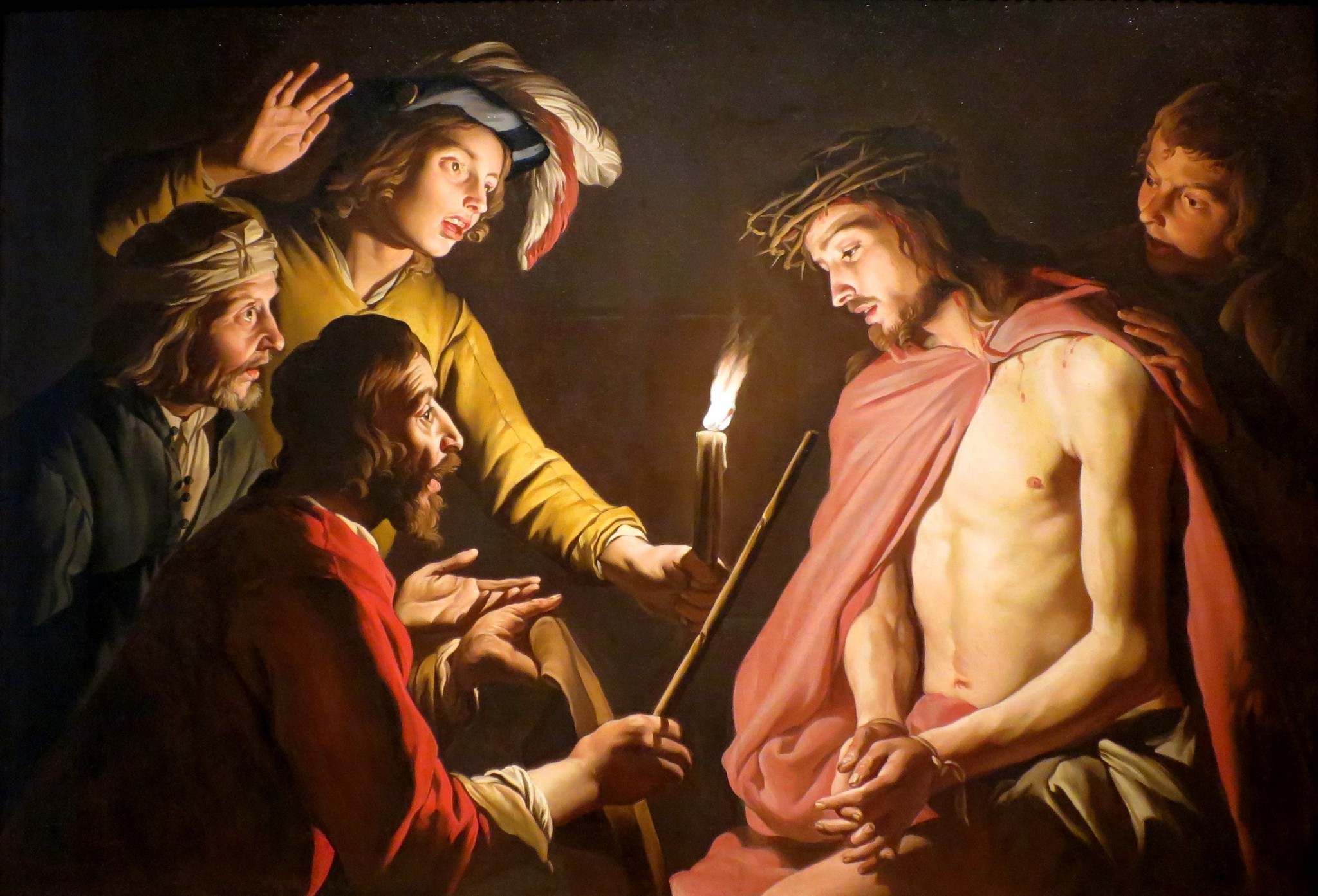
The Way of the Cross
Traditionally, in the afternoon, the parishes organise a Way of the Cross or Stations of the Cross (le chemin de croix). This devotional act commemorates the Passion of Christ by evoking fourteen particular moments.
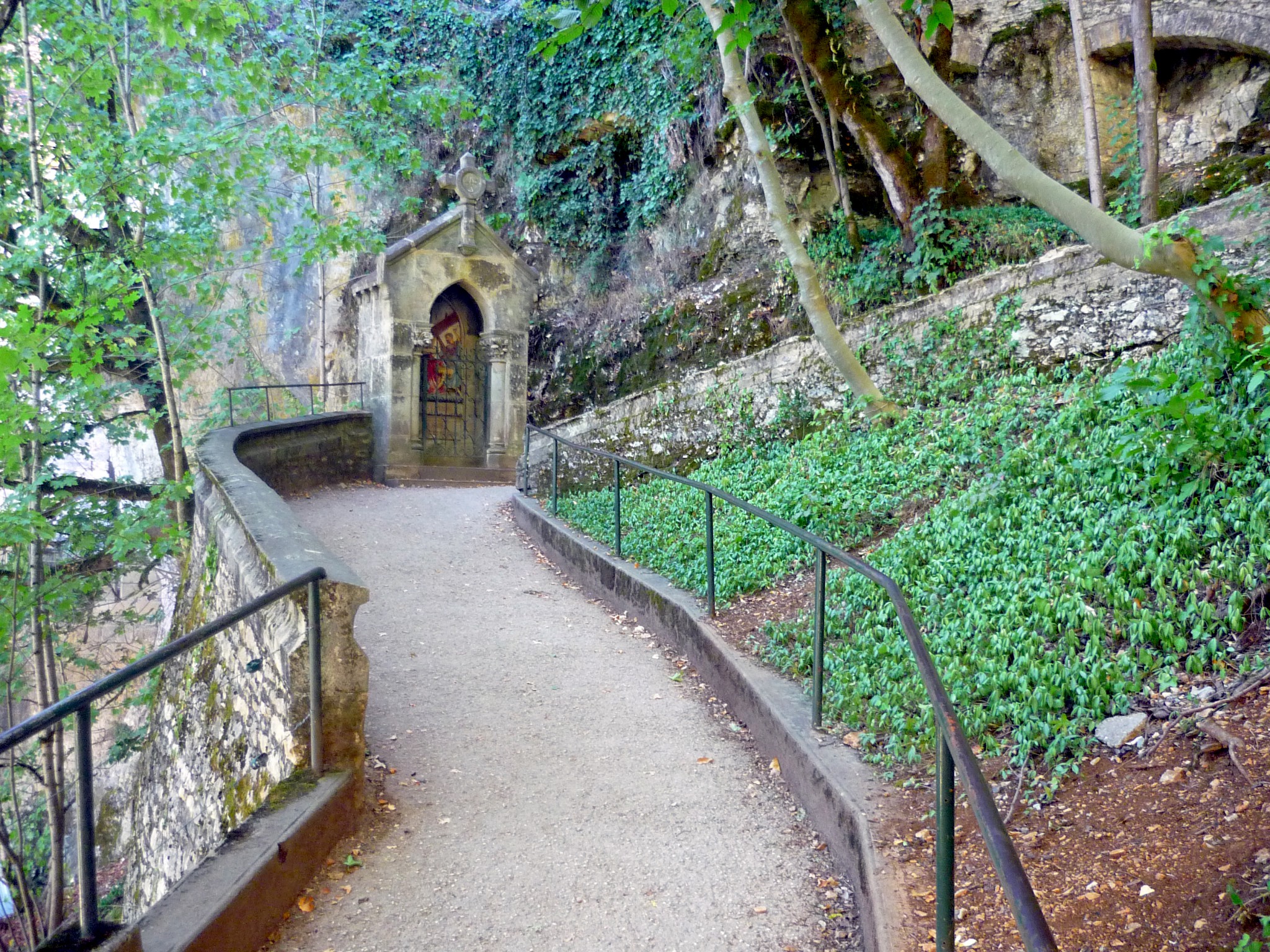
The ceremony sometimes involves a procession, interrupted by preaching, meditation and prayers, stopping before fourteen paintings, crucifixes or other symbols in or around the church or an adjoining place (usually a path reproducing the ascent to Calvary).
Holy Saturday in France
For the Catholics, Holy Saturday (Samedi Saint) is a day of silence, waiting and meditation.
They meditate on the sufferings of Jesus Christ, his death and burial, “Christ’s descent into hell”, and his future resurrection. In the Roman Catholic rite, no mass, baptism or marriage is celebrated on this day.
Easter Sunday in France
Until the end of Vespers (Vêpres) on the last day of the triduum, Easter Sunday (Dimanche de Pâques) is entirely dedicated to commemorating the Resurrection of Jesus Christ.
Sunday recalls the day of Christ’s resurrection. It is the Easter of the week. In French, Sunday is “Dimanche”, a word from the Latin “Dies Dominicus”, meaning the Lord’s Day.
In addition, on Easter Sunday in France, church bells ring out in full flight, recalling the message of the Good News announced to all creation.
The Easter Octave in France
Thus begins the Easter Octave (Octave de Pâques), the eight-day celebration of the Resurrection.
Indeed, in the Latin liturgical calendar, the Easter octave designates the eight days following the Easter feast, from Easter Sunday to Quasimodo Sunday. In the Catholic churches that celebrate it, the Easter octave marks the beginning of Eastertide in France.
During this octave, mass is celebrated every day with the prayers of Easter Day. Repeating the same prayers and songs reminds us that the Resurrection extends beyond the Easter feast. Church bells can ring at 6 pm during these eight days.
Easter Monday in France
After the seven painful and dramatic days of Christ’s Passion, the day of Resurrection ushers in the first day of a new week. A new time of peace and joy.
Easter Monday (Lundi de Pâques) is this “eighth day” that prefigures a peaceful and radiant eternity, hence the name of Radiant Monday (le lundi radieux).
In the south of France, it was customary to have a large picnic with family and friends on Easter Monday at noon with a large omelette, prepared with Easter eggs, as the main course. This tradition is called “Easter omelette” or “pâquette”.
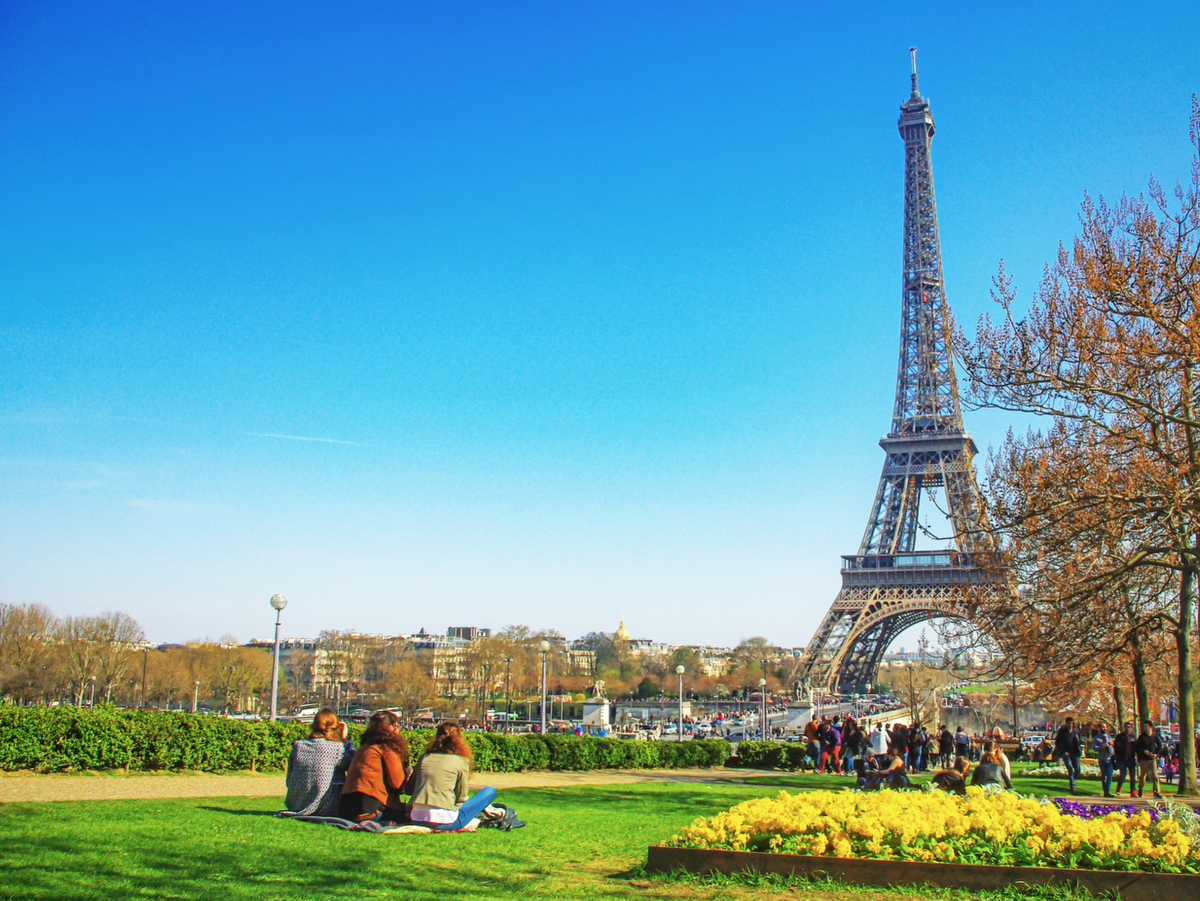
The Eastertide in France
The Eastertide (Temps pascal) is a period that lasts 50 days and extends from Easter Sunday to Pentecost Sunday.
What is Easter in French?
Easter in French is known as “Pâques“.
But we have a word missing an ‘S’: “Pâque“. So what’s the difference between the two words?
The French word “Pâque” comes from the Latin “Pascua”, meaning “food”, itself coming from the Hebrew “Pessah” (hence the word “passage” or “pass-over”)
The feast of Pessah (or Passover) commemorates the flight of the Hebrew people from Egypt (the Exodus).
According to the Gospel, it was during the Jewish celebration of Pessah that Jesus rose from the dead.
In French, there is a distinction between:
- the “Jewish Passover” (“Pessah” or “Passover” in English, celebrated by the Hebrews) = “la Pâque juive”, and
- the “Christian feast of Easter” = “la fête chrétienne de Pâques” (with a final “s”).
The Jewish Passover commemorates the Exodus from Egypt.
The Christian Easter celebrates the latter event; which runs from the Last Supper of Christ to His Passion, His crucifixion, and His resurrection.
Happy Easter in French
Passover or Easter? What a spelling puzzle!
If Easter refers to the Jewish or Orthodox feast, it is feminine singular, used with the article “la” and written with a lowercase “p”.
« La pâque juive est célébrée dans ma ville en avril. » (The Jewish Passover is celebrated in my town in April)
« Ma mère a préparé des gâteaux de la pâque juive. » (My mother made Jewish Passover cakes)
When it comes to the Christian feast, Easter is masculine singular, and the word is used without an article but with a capital “p”.
« Pâques est célébré un 4 avril en 2021. » (In 2021, Easter is celebrated on the 4th of April)
When the word Easter accompanies an adjective, it becomes the feminine plural (and the capital “p” is kept).
« Joyeuses Pâques ! » (Happy Easter!)
« Qu’avez-vous fait pendant vos Pâques ? » (What did you do during Easter?)
How to wish Happy Easter in French?
As we’ve learnt above, you know how to wish happy Easter to your French-speaking friends:
Happy Easter = Joyeuses Pâques !
Yes, similar to Merry Christmas (Joyeux Noël !)
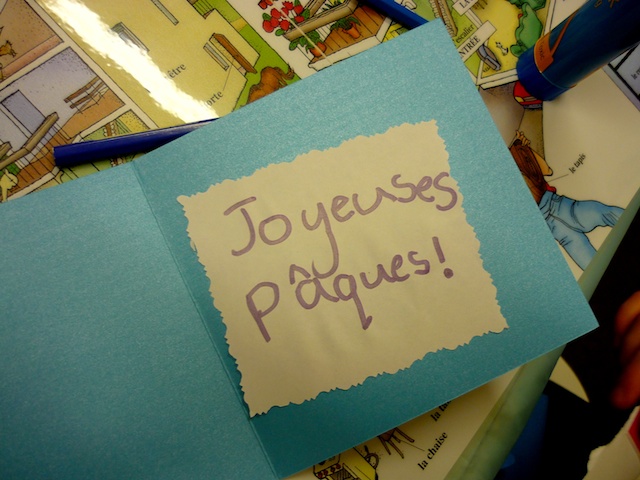
But beyond learning about what French is for Happy Easter, there are several expressions I’d like to share with you.
At Easter in France, some people are used to sending a message to their loved ones.
French Easter tags or cards
On a French Easter tag or card accompanying a chocolate egg, bell or hen, one can write:
- Une pensée amicale pour Pâques.
- Très belles fêtes de Pâques
- Joyeuses fêtes de Pâques.
- Bonnes fêtes de Pâques.
- Joyeuses Pâques, mon lapin
- Joyeuses Pâques, ma Cocotte (with a hint of derision!)
French Easter emails
To conclude a letter or an email, you can write :
- Meilleurs vœux de Pâques ! (Best wishes for Easter!)
- Je te souhaite de joyeuses Pâques à toi et à ta famille ! (I wish you and your family a happy Easter!)
- Je vous souhaite de passer d’excellentes fêtes de Pâques, entourés de vos proches et sous un beau soleil printanier. (I wish you a wonderful Easter, surrounded by your loved ones and under a beautiful spring sunshine.)
Christian messages
For Christians, we can encourage each other with biblical passages such as Romans 8: 38-39:
Car j’ai l’assurance que ni la mort ni la vie […] ne pourra nous séparer de l’amour de Dieu manifesté en Jésus Christ notre Seigneur. (For I am convinced that neither death nor life […] will be able to separate us from the love of God that is in Christ Jesus our Lord.)
En ce jour sacré, partagez en pensant à nous ces œufs en chocolat que nous vous offrons avec plaisir. Puisse Pâques vous apporter paix et sérénité et vous permettre de vous émerveiller devant le miracle de la vie. Joyeuses Pâques ! (On this sacred day, please share these chocolate eggs that we offer you with pleasure. May Easter bring you peace and serenity and allow you to marvel at the miracle of life. Happy Easter!)
A humorous message
Some people do not hesitate to write a more humorous message, such as:
Faîtes vous plaisir et à bas le régime! Le jour saint de Pâques est un jour où nous sommes autorisés à prendre 5 kg ! Profitez-en ! (Enjoy yourself and go on a diet! The holy day of Easter is a day when we are allowed to gain 5 kg! Enjoy it!)
How is Easter in France determined?
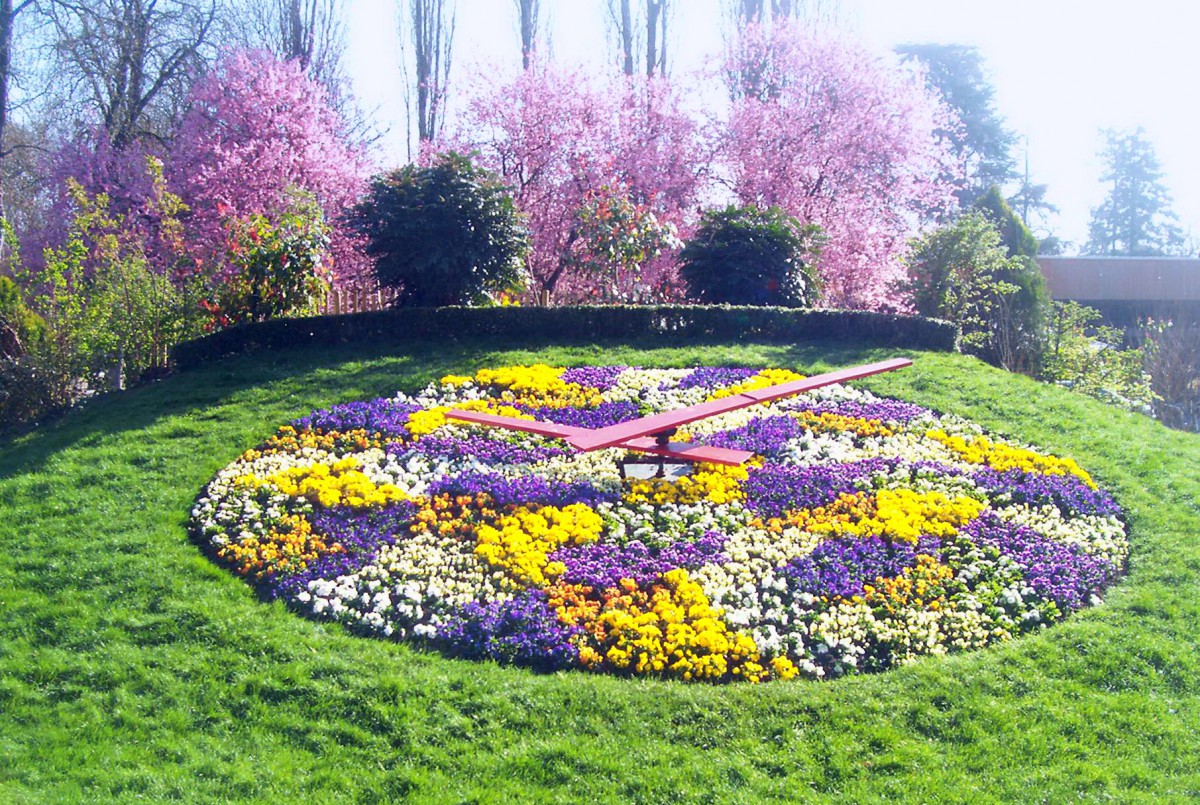
In France, Easter is celebrated on a Sunday. The exact date depends on the seasons and the movement of the sun.
Which – I confess – is a little complicated to understand…
However, we are quite lucky to share the same Easter date with all Christians around the world – unlike Mothers’ Day or Fathers’ Day!
325 – Easter observed on the same day by all
In 314, the Council of Arles declared that “the Lord’s Passover will be observed on the same day by all”. It asked Pope Sylvester to fix the date. However, this decision was hardly followed up.
In 325, Constantine the Great convened the Council of Nicaea to agree with the 318 representatives of Christianity. This was when the method of calculating the date of Easter was finally fixed for the whole of Christendom.
The 14th day of the first lunar month in spring
The French celebrate Easter Sunday on the 14th day of the first lunar month in spring. This corresponds to the first Sunday after the first full moon in spring. This date may change according to the longitude of the city from which this observation is made. The reference city in France (as in Europe, Australia and America) is Rome, Italy.
Therefore, the date of Easter, being fixed according to the lunar calendar, is celebrated on 4 April 2021, 17 April 2022, and 9 April 2023.
I told you, it’s not that simple!
However, we can say that Easter can occur between 22 March and 25 April.
Easter in France is a holiday when you don’t work!
Good Friday (Vendredi Saint) is not a public holiday in France, except in the French départements of Moselle [57] in Lorraine and Haut-Rhin [68] and Bas-Rhin [67] in Alsace. Therefore, it is common to see Alsatians (and Germans) rushing into shops left open in Nancy and Belfort on Fridays, causing monster traffic jams on the outskirts of the “border” towns.
Easter Monday (Lundi de Pâques) is a public holiday in France where you don’t work: shops and administrations are closed (except perhaps your local and favourite boulangerie!).
Easter Monday is a gesture of Napoleon after the Concordat (an agreement between Napoleon and Pope Pius VII, signed in 1801). The future emperor chose to end the long Easter period during which most French did not work.
The week following Easter Sunday would no longer be a public holiday. Consequently, only the first Monday would remain a sign of compensation and compromise with the Church.
Napoleon’s arbitrary decision to keep the second day of the Easter Octave as a public holiday was followed by many European countries and gradually spread. Easter Monday is thus a public holiday in all European countries except Portugal.
Dates of Easter in France
Easter and the related holidays are moveable feasts in that they do not fall on a fixed date. Easter is determined every year thanks to a complex calculation. Here are the dates for the years to come:
- 2023: April 9
- 2024: March 31
- 2025: April 20
- 2026: April 5
- 2027: March 28
- 2028: April 16
- 2029: April 1
- 2030: April 21
Note that in 2029, the last Easter Sunday for the 2020s will occur during April Fools’ Day!
Moveable feasts around Easter
The date of Easter still today fixes many liturgical feasts and celebrations linked to it by another set number of days and are, therefore, moveable feasts.
The best-known in the West are Mardi Gras, Ash Wednesday, Mid-Lent, Good Friday, Ascension, and Pentecost Sunday.
The French Easter traditions explained!
French Easter traditions are followed in all cities, towns and regions of the country. As at Christmas, the historical province of Alsace is particularly rich with local festivities… although the Easter egg dispenser is not the same as in the rest of France.
🎦 Watch our YouTube Video on the 10 Easter Traditions in France:
The preparation of Easter in schools
La préparation de Pâques dans les écoles
Easter is a top-rated holiday, particularly among children! The annual calendar of the French National Education system ensures that Easter Monday falls during the school holidays for all children.
Even though Easter is a religious celebration, schools (public or private) are involved in the preparation of the Eastertide with many activities such as cutting, colouring and crafts.
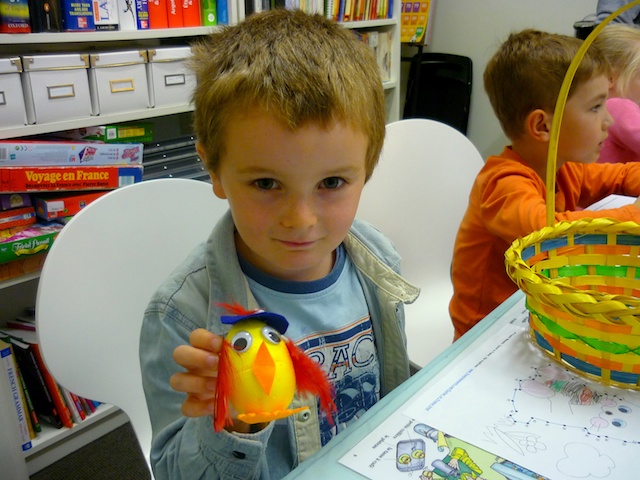
For the occasion, the children take out the scissors, coloured paper, glue, ribbons and polystyrene eggs to make Easter decorations: greeting cards, bunnies, bells, chicks, and not forgetting the essential Easter eggs.
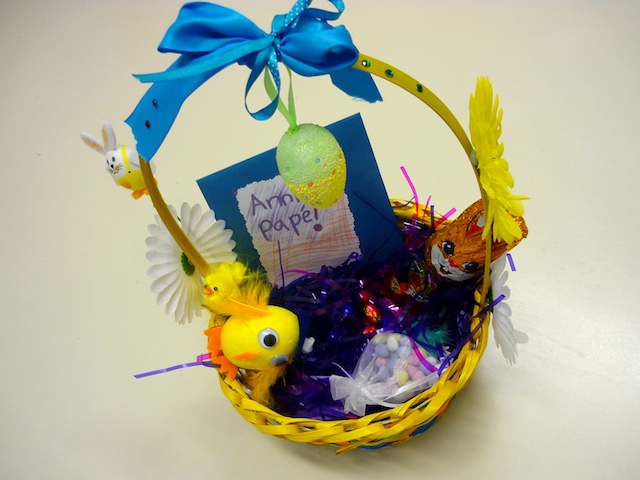

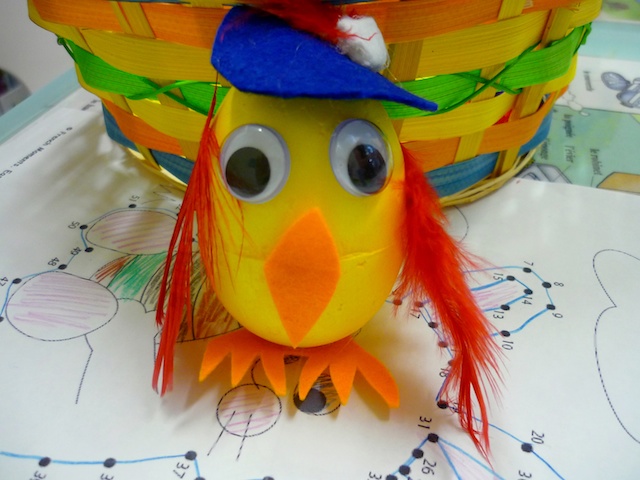
The colours of Easter in France
Les couleurs de Pâques
Easter in France takes place at the very beginning of spring: the grass turns green, the flowers start to come out of the ground, and the first buds appear on the trees.
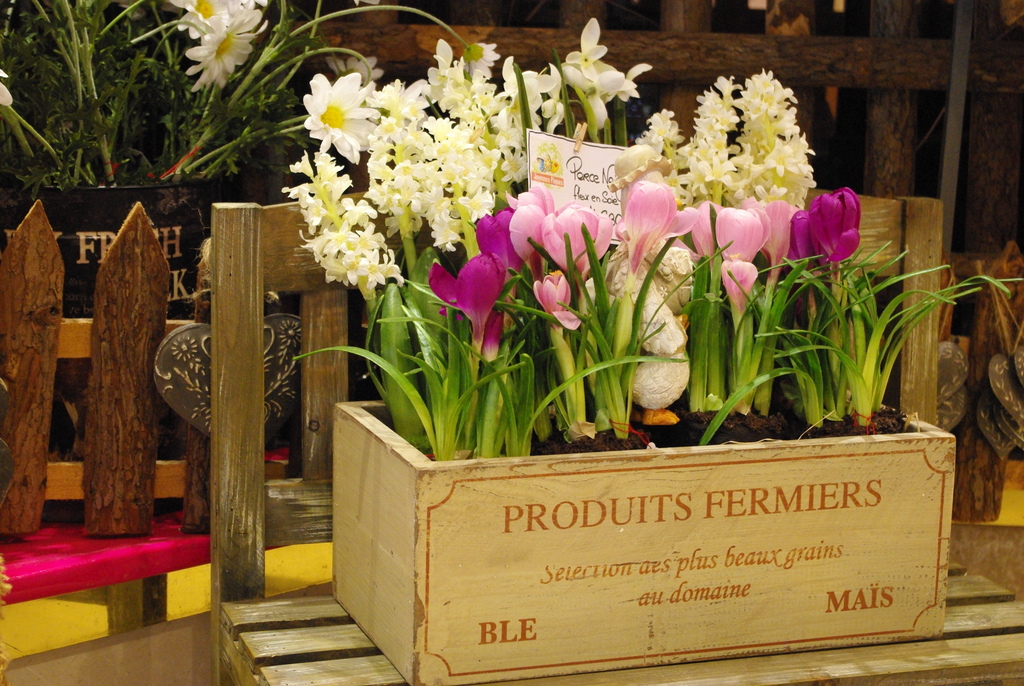
Naturally, Easter decorations in France are inspired by a palette of fresh, pastel, vivid, sunny or citrus-inspired colours. These include soft green, aniseed green, pink, yellow and ecru.
In the Catholic Church, this day of joy is marked by white and gold, symbols of joy, light and victory.
Colour Yellow
Yellow is a colour symbolising joy and light. It evokes chicks, flowers (daffodils, narcissus, tulips…), and the sun that starts to warm the atmosphere. It is a colour of joy and light.
Colour Gold
Gold is the colour of glory, the colour we associate with victory.
Colour White
White is the colour of peace and purity.
Colour Green
Green is a colour that is associated with spring and evokes rebirth and growth. It is a colour that symbolises hope and is also found on the Christmas tree, a green tree, even in the middle of winter.
The incredible Easter decorations in Alsace
Les décorations de Pâques en Alsace

In Alsace, people decorate their houses before Easter. Branches are set up on the table or the edge of the window (so that passers-by can admire them!). Residents decorate them with hand-painted eggs, spring flowers and various figurines. The children make nests with leaves, moss, lichen or grass which they will place in the garden, hoping that the Easter bunny will fill them with multi-coloured chocolate eggs at night!
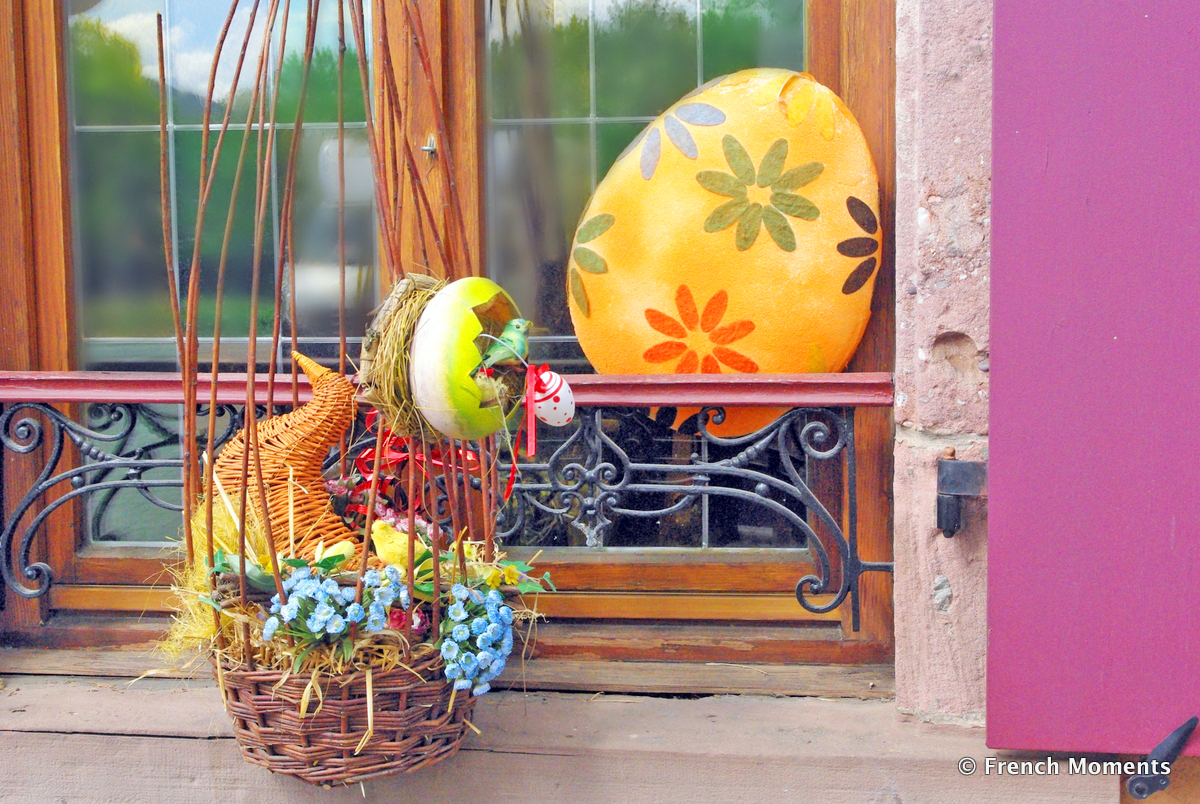
Inside, Easter colours brighten up Sunday lunchtime tables. Flowers such as daisies, tulips, narcissus and daffodils are in season and can be used to decorate centrepieces.
Find out more about the Easter traditions in Alsace.
Easter markets in Alsace
Les marchés de Pâques en Alsace
In bucolic settings, many market towns in Alsace organise Easter markets (or spring markets). They seem to create a counterpart to the Christmas markets, which have made the region famous.
The Colmar Easter Market
The most famous Easter market is that of Colmar. For a fortnight in April, more than 70 exhibitors are waiting for you in the city’s heart on two sites: Place des Dominicains and Place de l’Ancienne Douane.

The exhibitors offer authentic and original products. They have been carefully selected for their local and regional handicrafts that respect the spirit of spring and Easter: spring decoration items, decorated eggs, vine plants, flowers, etc…
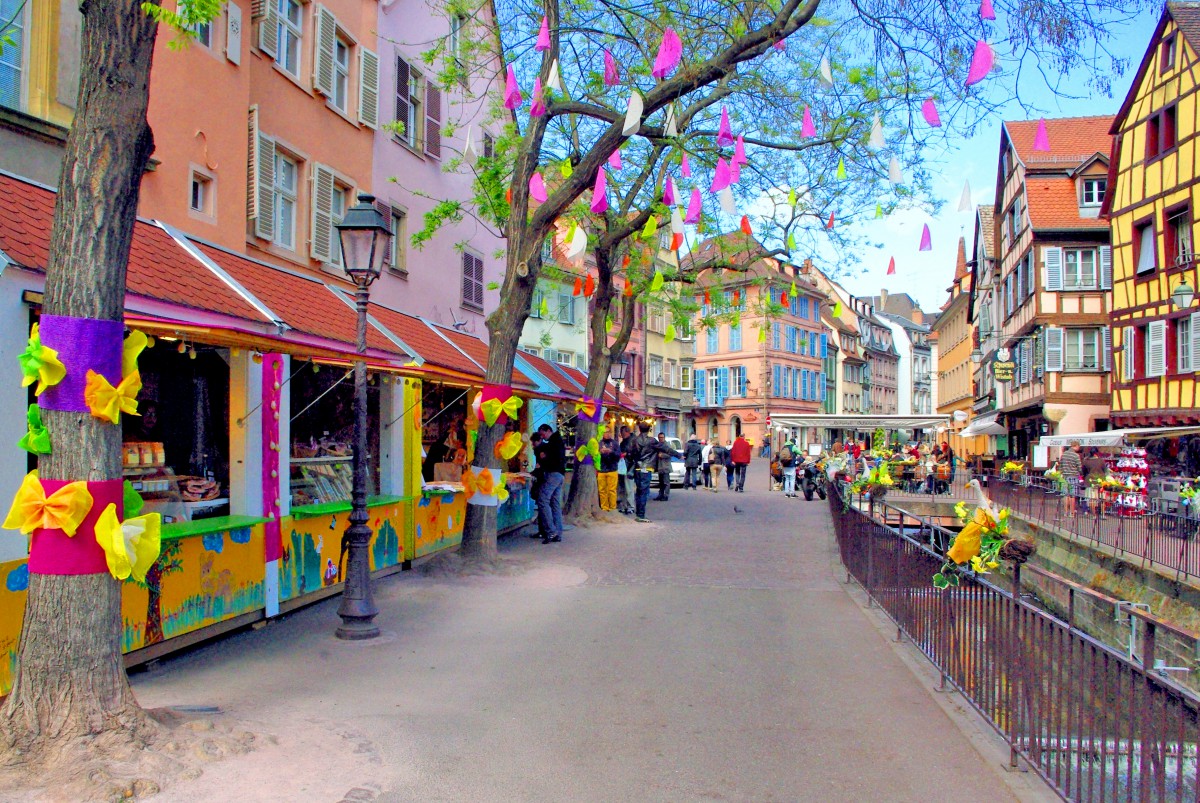
There are also gourmet specialities: tartes flambées, pretzels, foie gras, cheeses, Alsatian wines, jams, jars of honey, fruit juices, marshmallows, caramels, nougats, chocolates, gingerbread, waffles, crêpes, kugelhopfs… without forgetting the famous Easter Lammala.
Every year, Colmar celebrates spring with a music festival. Several concerts are organised in various places in the city: classical music or jazz concerts.
Easter Markets in other parts of Alsace
Other towns and villages organise a similar but shorter event.
Kaysersberg offers exhibitions and sales of collector’s eggs and Easter decorations in its Easter market.

The Ribeauvillé spring market plays the “peasant” card to celebrate the festive Easter season. Exhibitors dressed in peasant clothes present their know-how and offer local products and entertainment (mini-farm, pony rides, etc.).
Haguenau celebrates the return of spring at Sandhaas Spring with a multitude of festive and convivial events.
The Strasbourg Easter market brings together 40 craftsmen on the Place Saint-Thomas for a week in April.
Finally, several other communes organised an Easter/Spring market in 2019: Benfeld, Bourbach-le-Bas, Guebwiller, Mutzig, Niederbronn-les-Bains, Nordhouse, Obernai, Ribeauvillé, Sainte-Marie-aux-Mines, Thann.
Easter eggs in France
L’œuf de Pâques
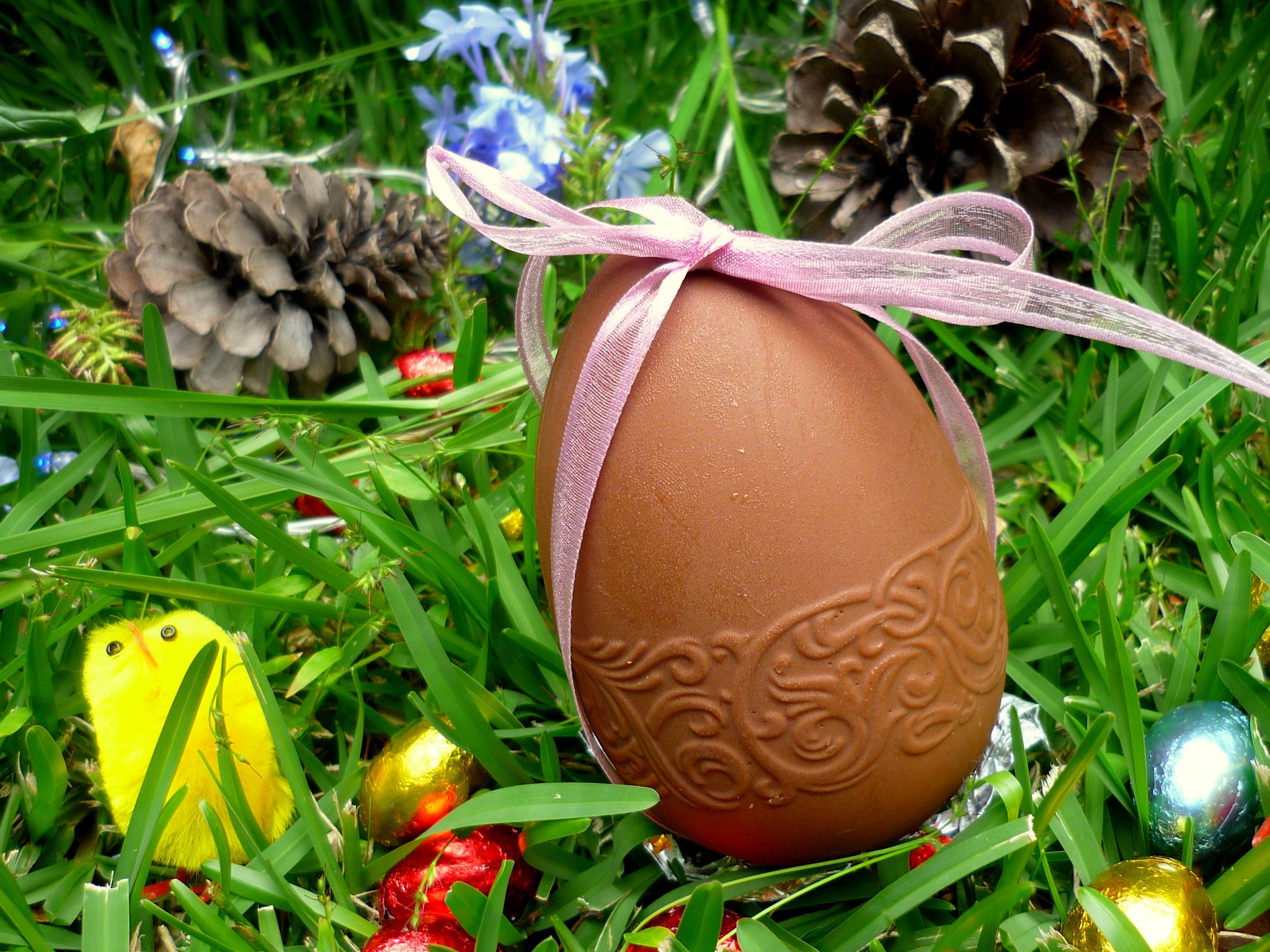
The tradition of offering decorated eggs stems from the symbolism of the egg. It evokes life and rebirth. It was, therefore, only natural that the egg became a symbol for this Easter celebration, commemorating rebirth through Jesus Christ’s resurrection.
Another reason for the connection between Easter and the egg comes from the tradition of the Lenten season, followed by Catholics as early as the Middle Ages. During this period of deprivation between Mardi Gras and Easter, believers were forbidden to eat eggs… so perhaps it is not surprising to see so many of them at Easter! In the Middle Ages, people offered each other decorated eggs at Easter. This tradition has been the source of many local legends and customs.
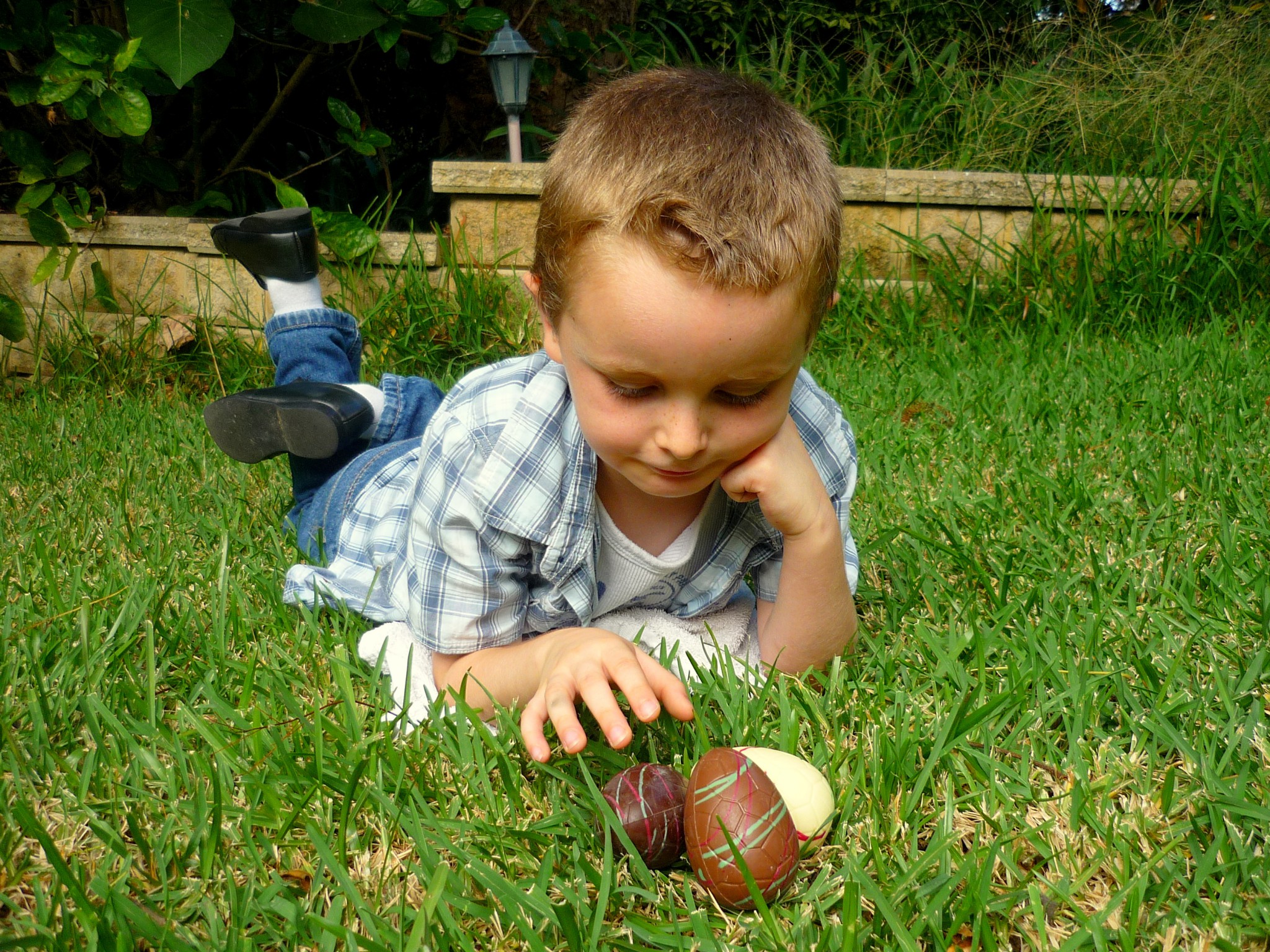
It was only in the 18th century that people emptied fresh eggs to fill them with chocolate. Since then, egg-shaped chocolates have appeared, and French children were told the Easter bells hid them in their gardens.
The Easter Bunny in France
Le lapin de Pâques
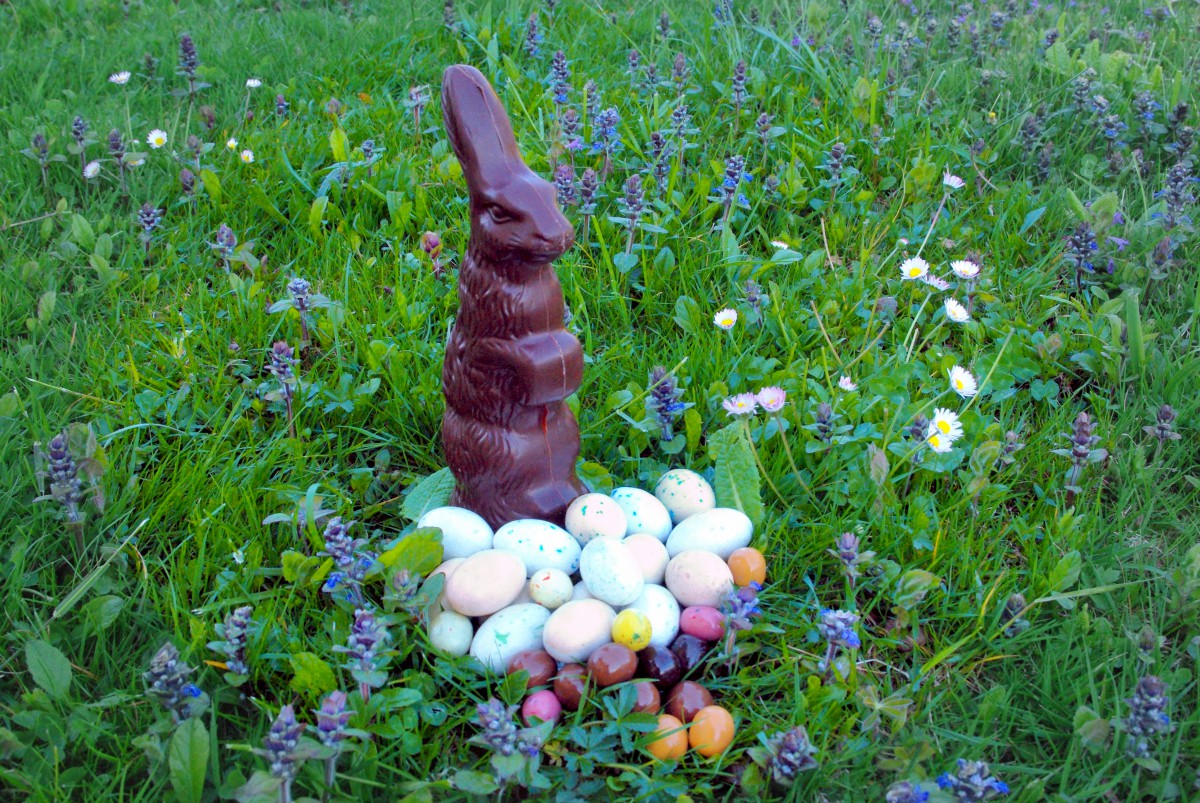
The Easter Bunny is an Easter tradition of Germanic and Nordic origin. The rabbit and the hare were emblematic animals of a goddess, “Ost ara”, who gave her name to the English word “Easter” or “Ostern” in German.
The extraordinary fertility of the rabbit (or hare) symbolised life’s abundance, renewal and proliferation.
Many say that it was in Alsace and the Upper Rhineland (which were parts of the Holy Roman Empire) that the hare was linked to the Christian Easter traditions.
In Alsace, the practice of offering eggs at Easter was first documented in an early 17th-century publication (yes, similar to the first mention of the Christmas tree, which also comes from Alsace).
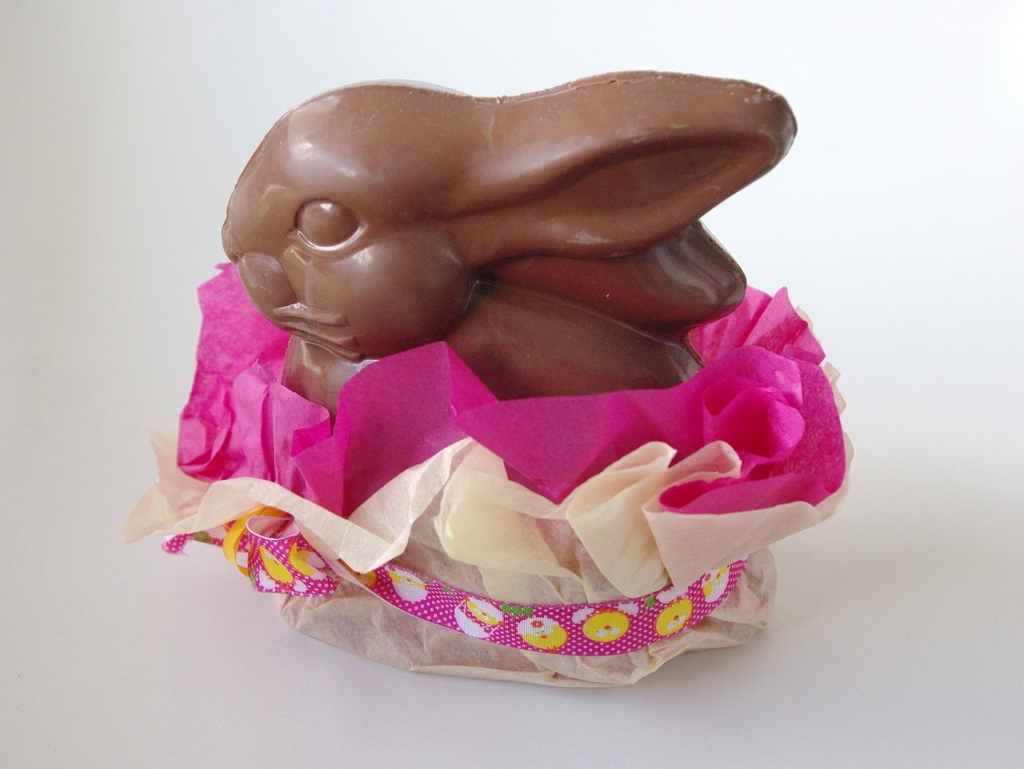
However, in Catholic countries such as France, rabbits/hares are replaced by another tradition: the Easter Bells.
What are the Easter Bells?
Les cloches de Pâques
However, bunnies give way to another tradition in Catholic lands, such as France or Italy: the Easter Bells.
Even if you can nowadays find chocolate Easter bunnies everywhere in France, in pastry shops and supermarkets, they don’t have the honour of being the ones who distribute Easter eggs to children on Sunday morning.
Because in France (except in Alsace and the département of Moselle), the eggs are brought by the Easter bells (cloches de Pâques), flying back from Rome.
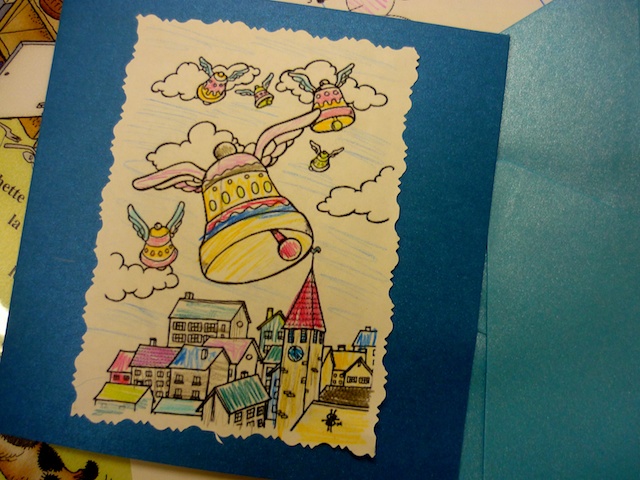
The flying Bells of Easter: an ancient tradition
The tradition of the bells dates back to the 7th century when the Church forbade the ringing of church bells between Maundy Thursday and Easter Sunday.
The bells, therefore, remained silent at the time of Christ’s death until the day of his resurrection.

To explain to children why the bells remain silent, it is said in France that they were flown on a pilgrimage to Rome. There, the Pope blessed them, and they took the opportunity to collect multitudes of chocolate eggs.
On their return, during the night from Saturday to Sunday, they spread the eggs in all the gardens of France.
Some bells can sometimes be mischievous, hiding them meticulously under shrubs and tall grasses.
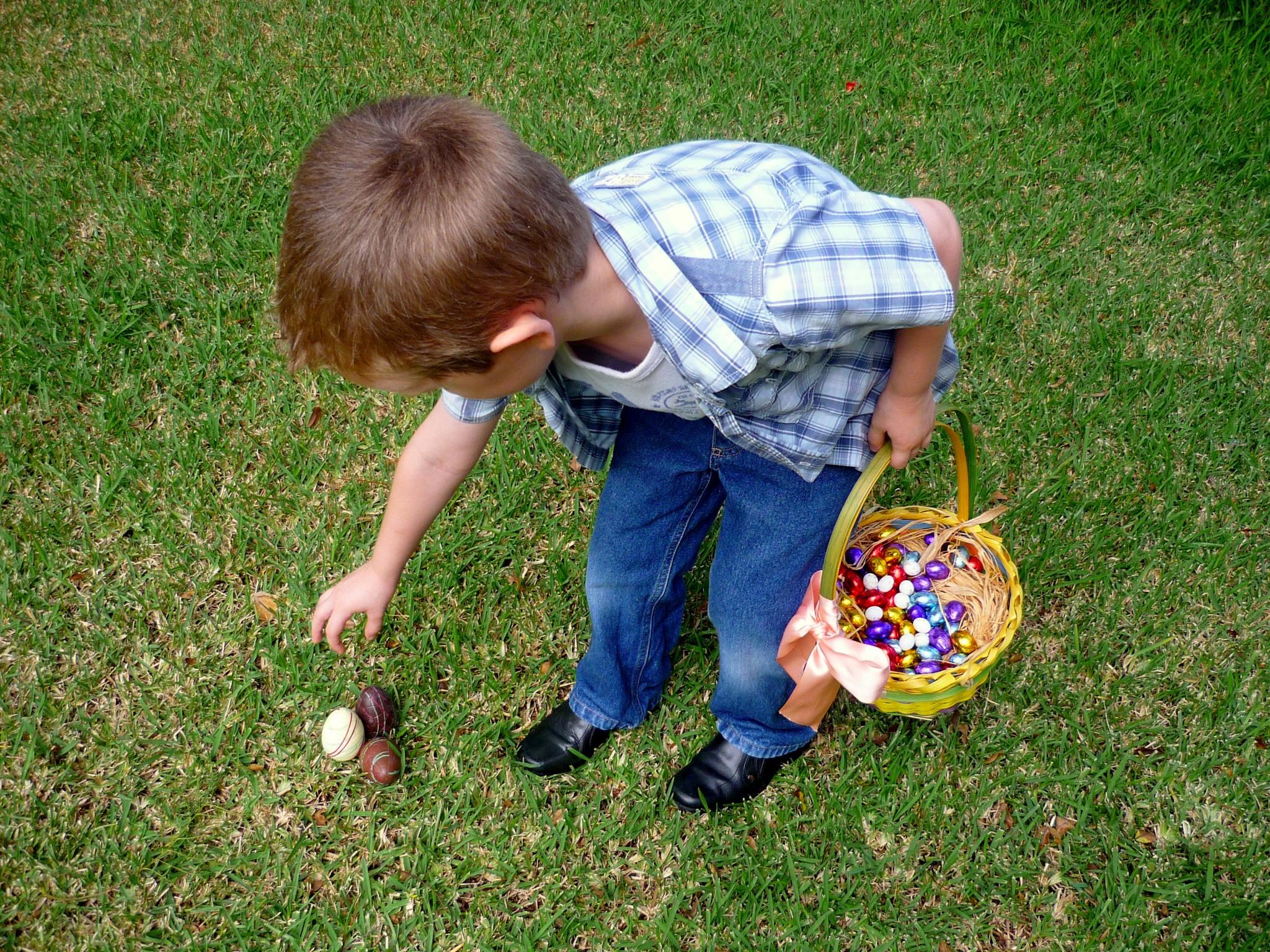
When they return to their place in the church bell tower, they will ring out loudly to announce the Resurrection of Jesus Christ. Listening to them, the children jump out of bed to go into the garden and participate in an Easter egg hunt with their little baskets!
As for the Easter bells, no one has seen them fly away and back… but they are represented with two wings and ribbons and are sometimes carried in a cart.
Easter egg hunts in France
Les chasses aux œufs de Pâques
Everywhere in France, big egg hunts are organised in castles, museums, amusement parks and zoos (registration required). A small selection:
- In Paris, a giant egg hunt is organised in the Buttes-Chaumont park by the famous confectionery A la Mère de Famille.
- There is also an egg hunt in the garden of the Champs-Elysées in the presence of many pastry chefs from luxury hotels.
- To the east of Paris, Provins invites children to stroll through the medieval city’s streets. People in medieval costumes distribute more than 8,000 chocolate eggs.
- The gardens of the Manoir d’Eyrignac (Périgord Noir) organise the annual event Les Trésors de Pâques (Easter Treasures). Children become adventurers in search of lost chocolates. To do so, they will have to solve riddles. A similar event is organised in the Gardens of Marqueyssac (Dordogne Valley).
- The biggest egg hunt in France takes place at the chateau of Vaux-le-Vicomte. Children are invited to find 110,000 eggs scattered throughout the castle gardens from Saturday to Easter Monday. Numerous entertainments and workshops accompany the event for young and old.
Easter egg hunts in Alsace
At the end of winter, Alsace beautifully perpetuates the tradition of Easter egg hunts. Countless communes organise Easter egg hunts in the run-up to Easter. Their gardens become playgrounds for fantastic egg hunts … for children, of course!
At the Ecomusée d’Alsace, several egg hunts are organised in the gardens. During playful workshops, visitors will discover how Lammalas and other Easter decorations are made. The much-anticipated “Course aux œufs des conscrits” (conscript egg hunt) is a tradition dating back to the 15th century!
Many villages and associations offer egg hunts for children (registration required), for example:
- On Easter Monday, the Osterhase (Easter hare) will hide its eggs in the Hortus Beatus garden in Sélestat.
- In Wangenbourg, the hare will meet the children in the enchanting setting of a castle.
- For three days in April, children aged 3 to 16 will be delighted by Pâques en Folie (Easter Madness) in the Wesserling Park (Thur Valley). The gardens give way to a playground for a great egg hunt where funny scarecrows will appear!
- Other egg hunts in Alsace: Barr, Châtenois, Horbourg-Wihr, Lapoutroie, Rhinau, Saverne, Thann…
Here are some pictures of previous Easter egg hunts we organised:

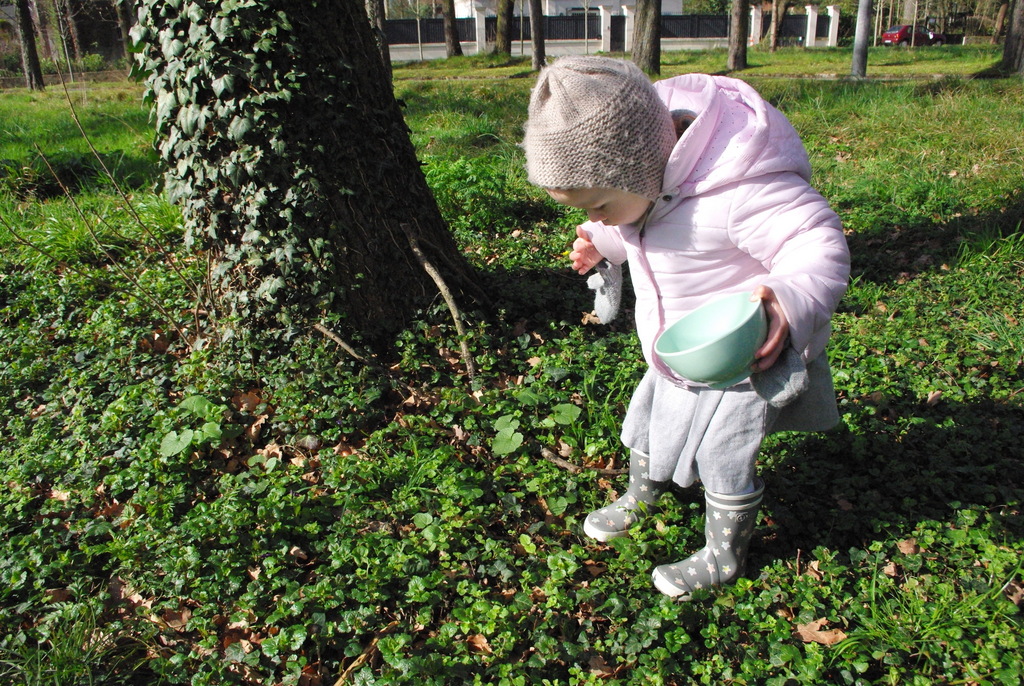
Easter Bells vs Easter Bunny!
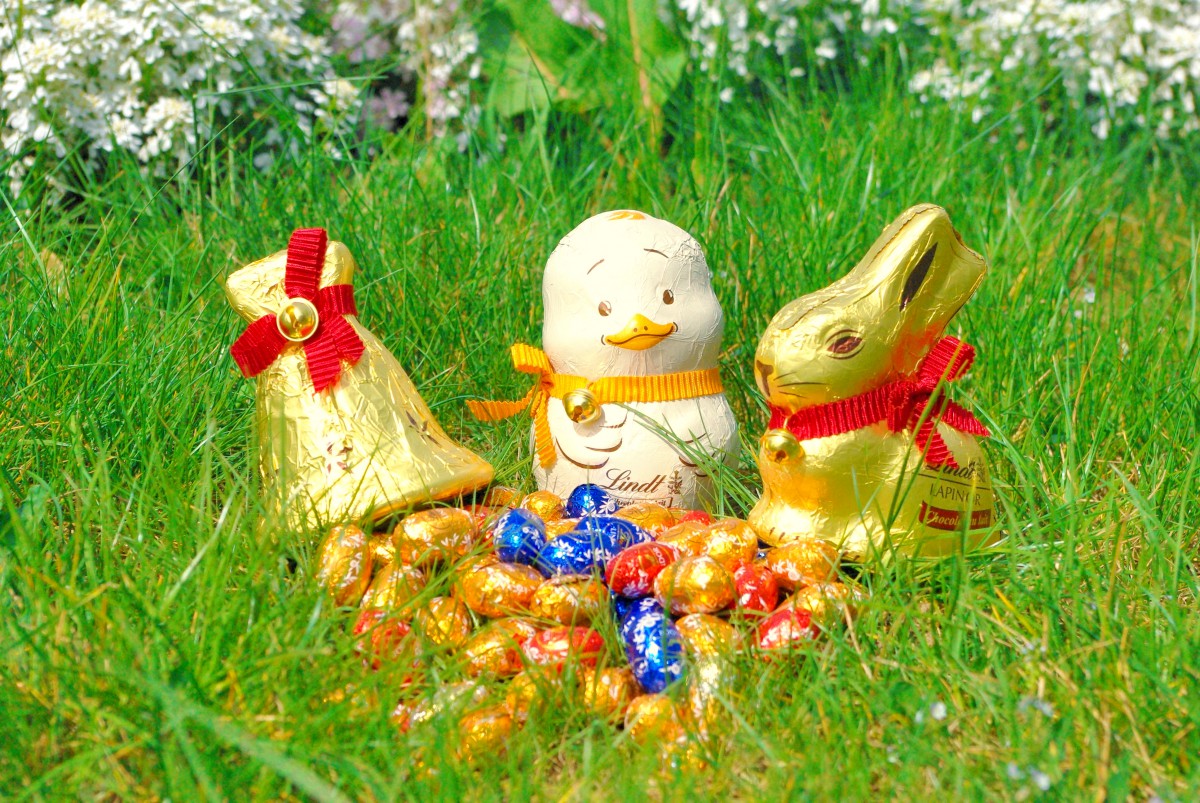
As we have seen previously, tradition has it that it is the bells which, on returning from Rome, hide the eggs in the gardens on Sunday morning. However, when you go to the supermarkets in France, bunnies seem omnipresent. And you must thoroughly search to find the famous flying bells!
Back in 2014, we noted that trend in the Annecy area.
A French Easter investigation in Annecy
We entered a local hypermarché in the suburbs of Annecy and went to the Easter section. We had to investigate before accusing those cute little bunnies and verify our theory.
The significant number of competitors outnumbered the poor little bells, so it was quite hard to find them.
Amidst the enormous quantity of chocolate in various forms, there were only three types of chocolate bells. The bunnies were the most prevalent, followed by hens and, for obvious reasons, many eggs of different sizes and chocolate: dark, milk and white.
Then we innocently asked young people under 35 who brought them chocolate eggs at Easter. The survey result was edifying: they had heard much more about ‘bunnies’ than ‘bells’ when they were children.
While in Alsace and the département of Moselle in Lorraine, the bunny (or hare) is part of the Easter tradition, it should not be the same in the rest of France.
To find out the truth, we launched on our social networks (Facebook, Twitter, Instagram…) an operation called “Bell or Bunny” to get answers about French Easter traditions.
A little later on, we got a better picture of the war raging between the Easter Bells and the Easter Bunny!
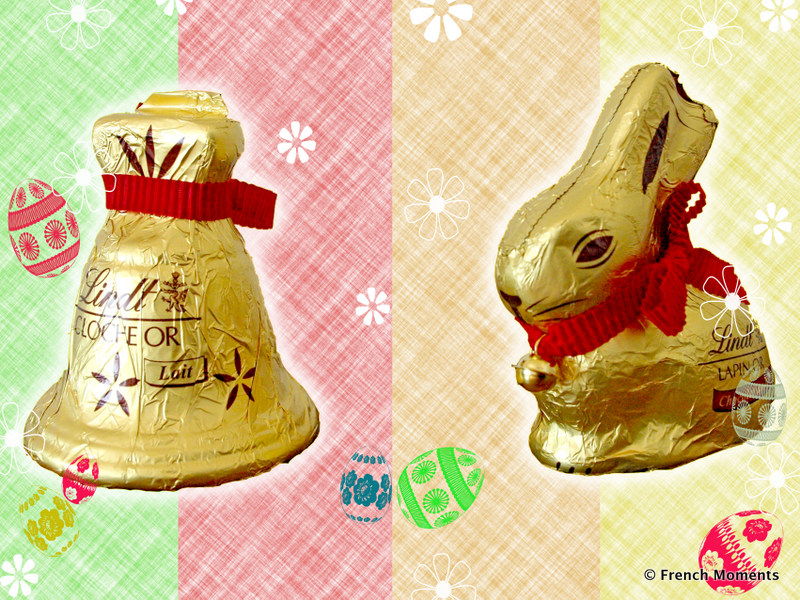
And so, who won the Easter war?
First observation: the Easter Bells are struggling to retain their place in France as the sole dispensers of chocolate eggs on Easter Sunday. This is due to globalisation and the strong influence of the Anglo-Saxon Easter Bunny.
This threat echoes a similar situation at Christmas when Santa Claus replaced Saint-Nicolas and Infant Jesus as the traditional present dispensers.
Secondly, Easter bells have maintained a strong presence in local chocolateries and confiseries which are not as influenced by the usurper (the bunny, of course!)
Thirdly, as the Easter bells find their origins in Catholic traditions, it is no surprise to see them fighting for their position against the bunnies in traditional Catholic provinces such as Savoie, Provence and Brittany.
Finally, on the map of France, the story of Easter traditions is quite simple. Most of the country traditionally believes that the bells bring the Easter eggs, except in Alsace and the Lorraine département of Moselle, where the Easter bunny takes the lead. However, this might evolve soon as the armies of bunnies could overtake the flying bells once and for all!
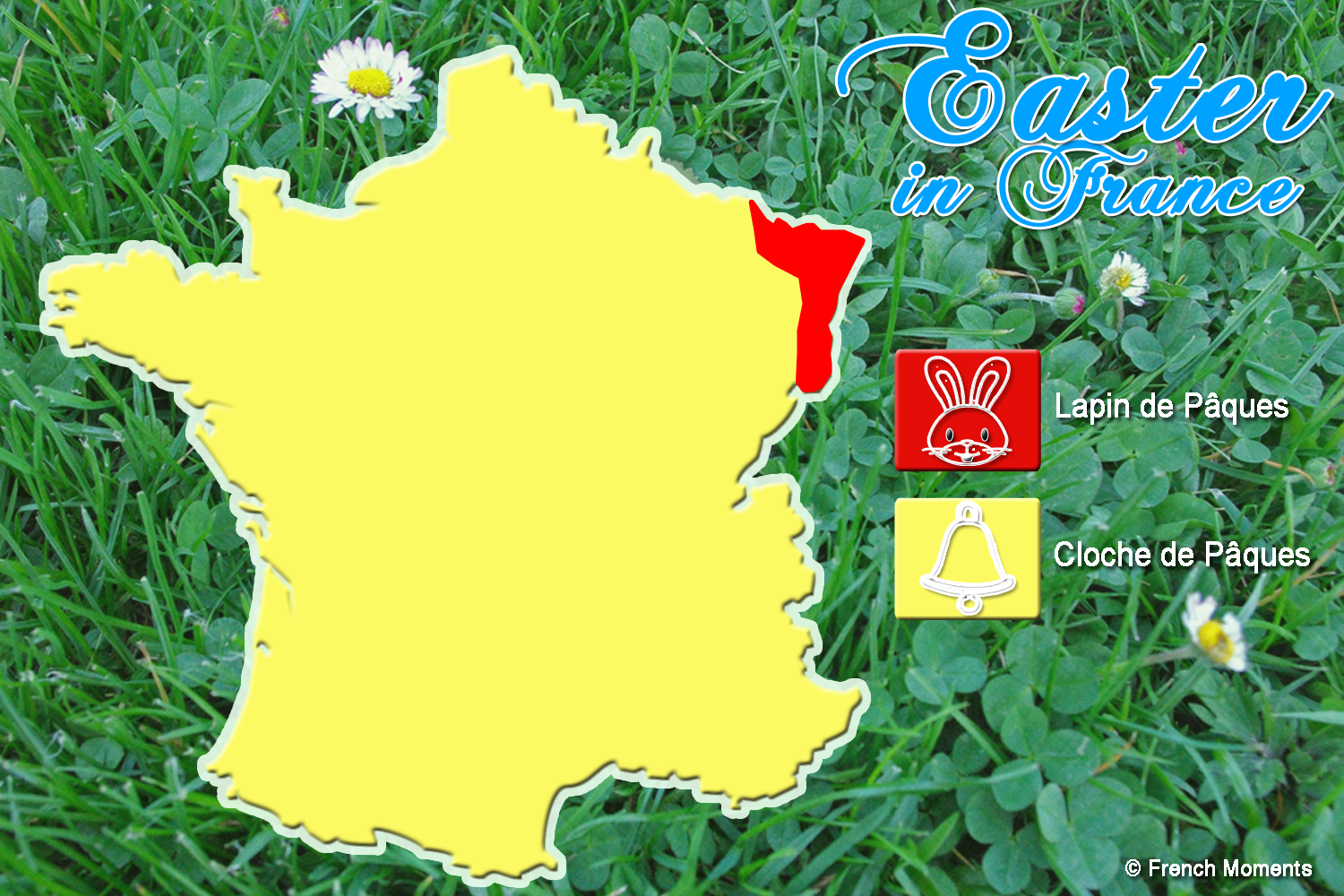
The 2021 Easter Survey
In the spring of 2021, I surveyed the French readers of my blog Mon Grand-Est to learn more about Easter traditions in France.
With 504 responses, I could draw many sociological conclusions about the evolution of French customs.
Here are the results of the survey.
Who used to distribute Easter eggs?
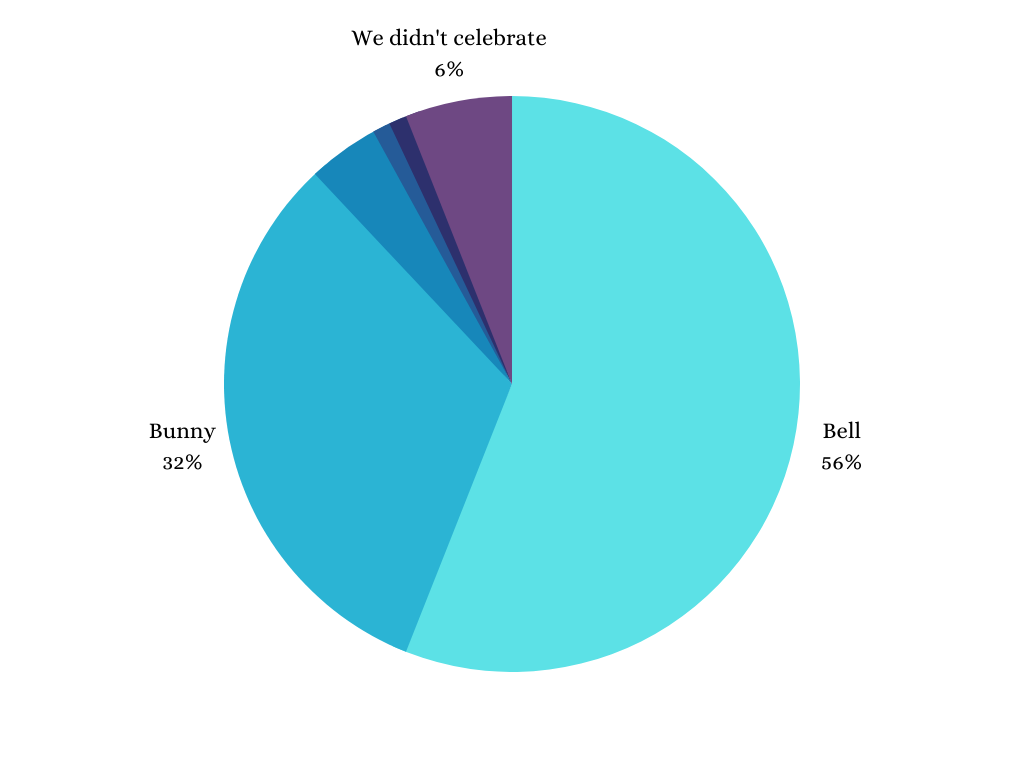
Many readers of the blog are retired people. When asked who distributed Easter eggs in your home when you were young, the answers reflect the tradition in France 50, 60 or 70 years ago.
And the finding is fascinating: a large majority answered Easter bells (56%).
Among the 32% of responses for the Easter bunny, we can guess that these are readers from Alsace-Moselle, where the bunny was the tradition.
Only 6% of the readers did not celebrate Easter as children.
Who is distributing Easter eggs today?
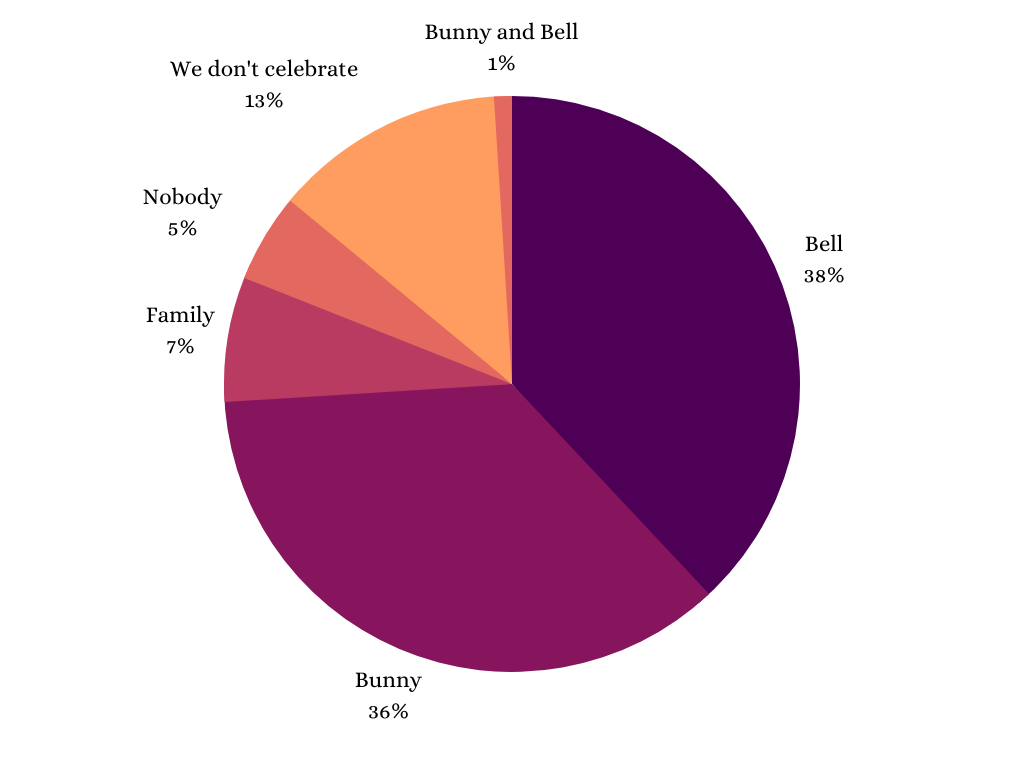
When asked who is distributing Easter eggs in your home today, opinions showed an incredible surge in the Easter Bunny (36%), almost equal to the Easter bells score (38%).
Note the increase in responses from people who do not (or no longer) celebrate Easter (13%).
Thus, this survey confirms the influence of the Easter Bunny in France.
It is possible that, in 10 years, a new survey will show that the Easter Bunny will become the preferred distributor of Easter eggs in France.
Where do the answers come from?
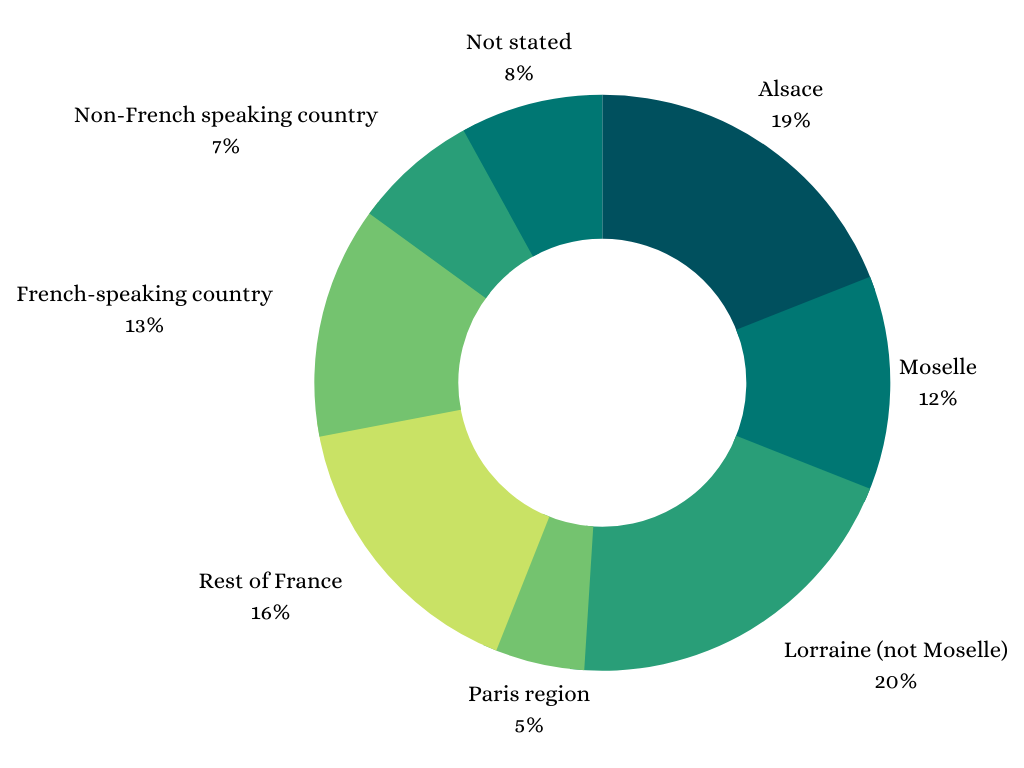
31% of responses came from Alsace and the Lorraine département of Moselle, where the tradition of the Easter bunny is very much in the majority.
Easter bunny vs Easter bell, who will win the fight?
Who knows… Interestingly, the Lindt company has been quite diplomatic in France. Indeed, alongside the Lapin d’Or (gold bunny), they have created the Cloche d’Or (gold bell). Impossible to find anywhere else, this little counterpart of the Lindt bunny sticks to the French tradition of Easter.
The best of French Easter food
Easter is a great occasion to taste several delicacies… It begins in Spring, the whole season of lamb and new vegetables. And many traditional French Easter food recipes have been designed to celebrate this special day.
Easter meals in France
In many regions of France, Easter pâté stuffed with a choice of veal, rabbit, pork, spinach, chard, hard-boiled eggs, etc., is served as a starter. You can also spotlight the asparagus, which has just arrived on the stalls.
Easter Lamb in France
In France and many European countries, Easter lamb (agneau de Pâques or agneau pascal) is on the menu for the Easter Sunday meal.
Lamb meat has been ritually eaten at Easter for centuries.
Indeed, the lamb is an animal loaded with symbols in the Christian and Jewish religions.
It recalls the lamb of God who gave his life for the world’s salvation.
The Gospel of St. John describes Jesus as:
“the lamb of God who takes away the sin of the world”.
The death of an innocent victim is the ultimate sacrifice to save all men and is thus identified with the lamb slain in the Jewish religion.
If the Easter lamb, in the figurative sense, is Jesus sacrificed, it is also the symbol of the risen Christ.
Hence, in all Christian countries, the tradition of eating lamb on Easter Sunday has been going on for centuries.
In many homes, the classic is still the trio leg of:
- lamb,
- flageolet beans, and
- green beans.
The meat is always roasted, garlic-spiked and often garnished with new vegetables, and can be found as:
- a leg (le gigot d’agneau),
- a shoulder (épaule d’agneau) or
- a rack of lamb (carré d’agneau).
So, the French Easter Lamb can be a meat dish (le gigot d’agneau or leg of lamb) or, in Alsace, a brioche: the Lammala or Lammele.
The Osterlammala: the Alsatian Easter Lamb
The Lammala (or Lammele in Lower Alsace) is a brioche eaten on Easter morning, shaped like a lamb and sprinkled with icing sugar.
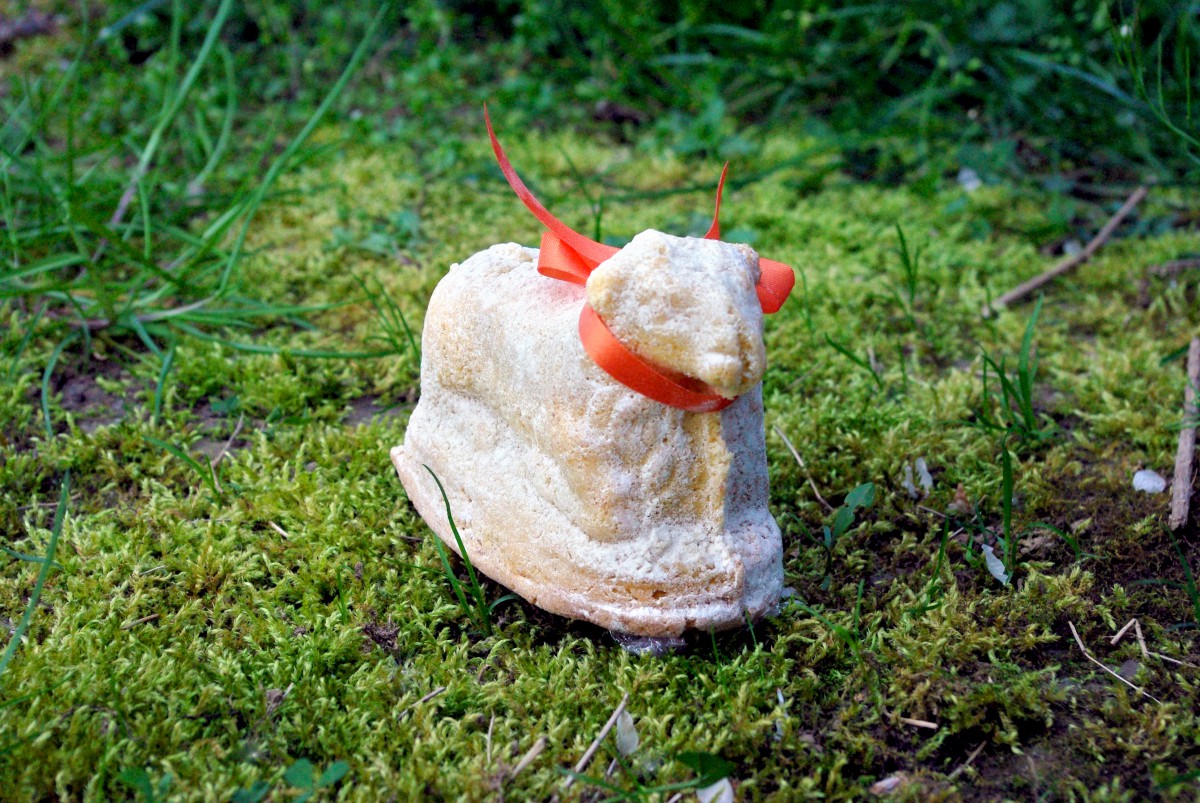
This sponge cake (génoise) is baked in terracotta moulds of two assembled shapes.
A small yellow and white (Vatican colours) or red and white (Alsace colours) banner is planted.
The tradition of Lammala (which has been attested since 1519) is that it is eaten for breakfast on Easter morning.
A plethora of French Easter Brioches
All sorts of orange blossom cakes are prepared for Easter in France, such as the brioche vendéenne with butter.
In Frontignan, near Sète, we are fond of miquettes. These are aniseed brioches.
The pogne de Romans is a speciality of the town of Romans-sur-Isère, in the Drôme. This crown-shaped brioche is made from flour, eggs and butter and flavoured with orange blossom.
Not far away, in Valence, the Suisse (Swiss) delights the taste buds. The Suisse takes the shape of a man and is a traditional cake made from shortcrust pastry and scented with orange blossom, with candied orange peel.
In Charente, the Easter speciality is the cornuelle. This excellent isosceles triangle shortbread contains aniseed sweets on the three corners. The triangle symbolises the incarnation of the Holy Trinity.
In Rouergue, one can taste the fouace, a brioche with orange blossom, with an airy texture and sometimes sprinkled with sugar or candied fruit.
Let’s move on to what you’ve all been waiting for…
*drumroll*
CHOCOLATE!
The iconic Easter chocolate in France
Le chocolat de Pâques
At Easter, as at Christmas, chocolate is an essential ingredient. The vast majority of pâtisseries-chocolateries in France pay meticulous attention to decorating chocolate eggs.
They compete in know-how by considering their work as a work of art. Whereas in the UK and Australia, chocolate is mainly sold (and tasted) in supermarkets in the form of large eggs bearing the name of a brand (Cadbury, Mars, M&Ms, Tim-Tam, etc.) and rabbits (the “Easter bunny” or “Easter bilby” in Australia), the French offer a variety of shapes: Easter bunny of course, but also:
- Cloches de Pâques (Easter bells),
- Poules de Pâques (Easter hen),
- Agneau de Pâques (Easter lamb), and
- Small chocolate fish called “Fritures de Pâques”.
- Besides, regional specificities add other shapes to the range: chocolate storks in Alsace, chocolate marmots in Savoy…
Yes, they look more like pieces of art than anything edible!
Fritures de Pâques: the French Easter fish!
The Fritures de Pâques are small fish-shaped chocolates.
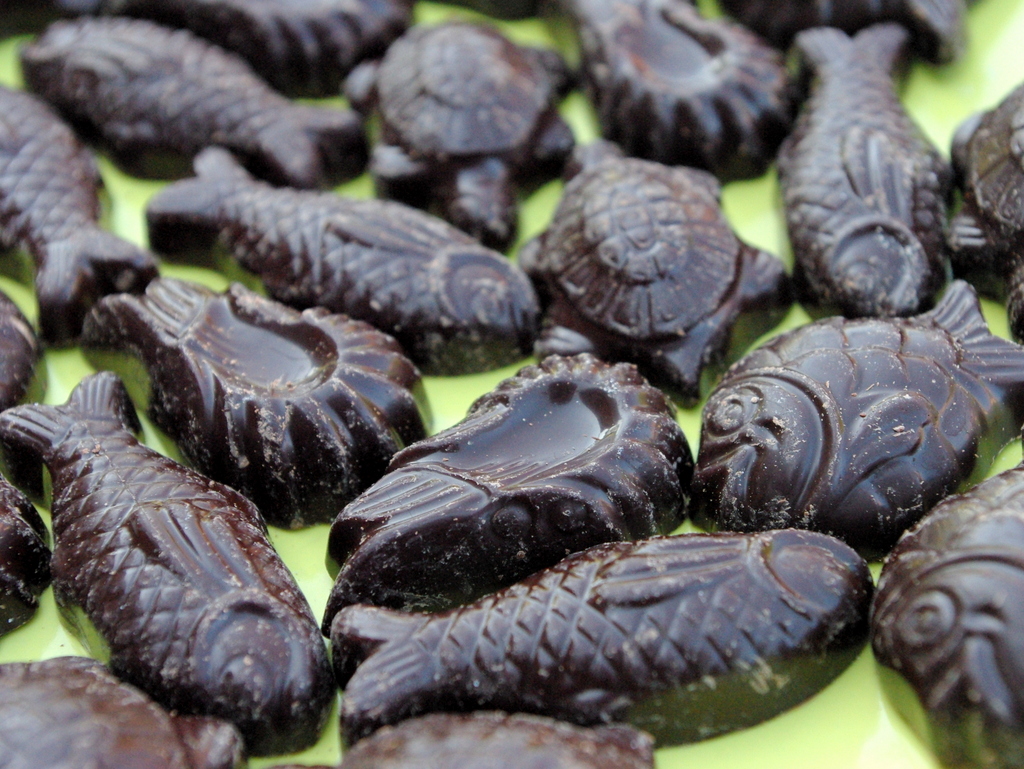
The fish is the symbol of Christianity, and during the Roman era, it was a signal for persecuted Christians to distinguish friends from foes.
The little Easter fish are called “fritures” (fried whitebait) because of their shape and are often packed into straw baskets or chocolate boxes to resemble a school of delicious little fish.
You can find them in any good pâtisserie-chocolaterie and supermarkets (although not as good quality).
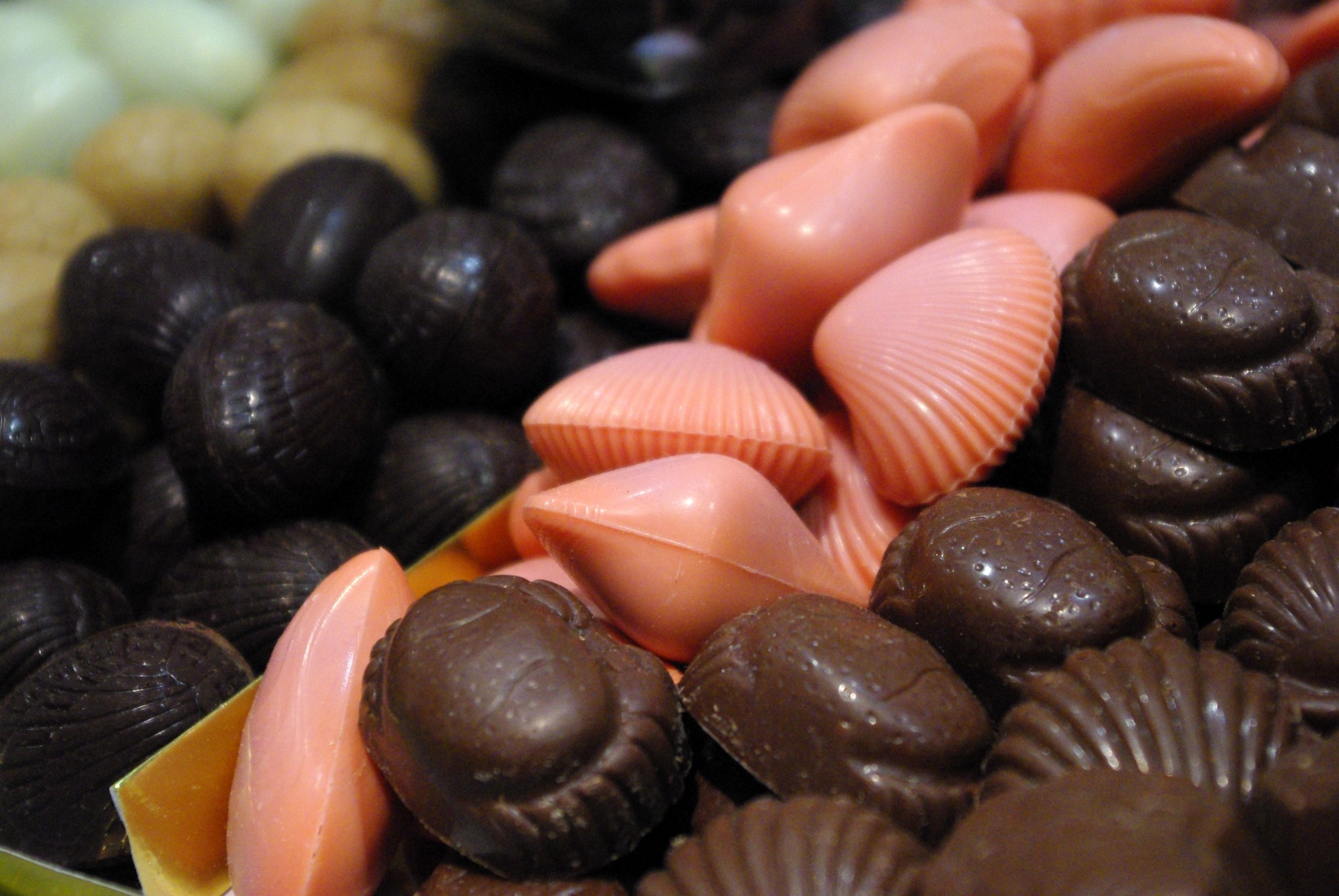
Easter chocolate facts in France
There are incredible figures that illustrate the French passion for chocolate!
French consumers are crazy about this “black gold” to the point of being among the top 10 chocolate eaters in the world.
Indeed, the French and chocolate are in a love story.
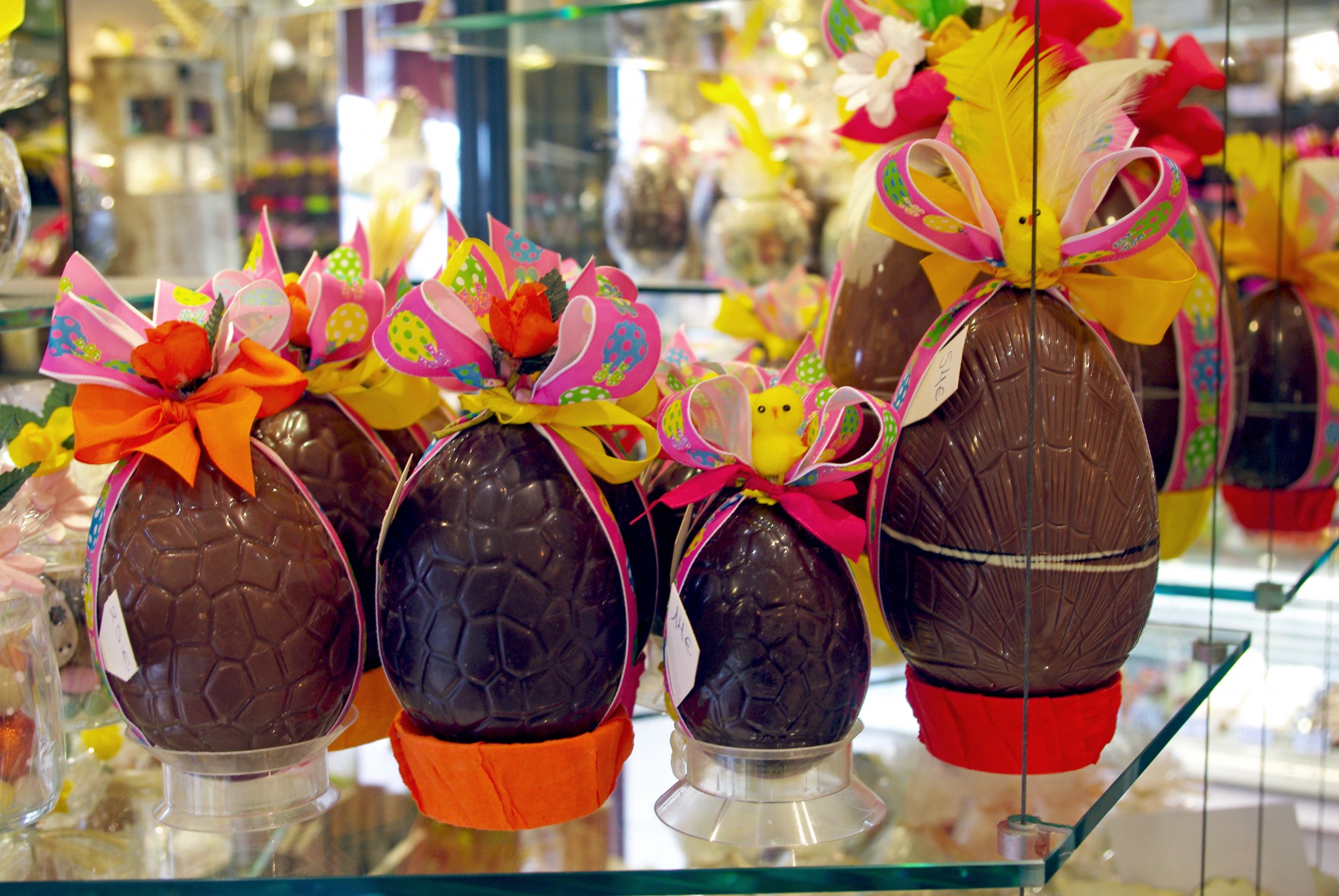
From your local chocolateries to the immense hypermarchés, chocolate is everywhere. Of good or not-so-good quality, chocolate is unsurprisingly a favourite sweet delicacy for Easter.
Let’s take 2018 as the reference year.
Turnover and production
- The chocolate sector’s turnover was €3 billion.
- A total of 333,029 tonnes of chocolate were sold. This is an increase of 74,368 tonnes compared to 2012.
- Easter in France is the second-most lucrative period for chocolate makers, accounting for 3.9% of annual chocolate sales (Christmas ranks first with 8.5% of sales).
- 14,748 tonnes of chocolate were sold at Easter. This is about the same as in 2012 (14,700) but less than in 2015 (15,200).
- Over the year, 58% of sales by volume were made in hypermarkets where chocolate is sold at an average of €31 per kg, half as much as in bakeries. 37% of sales were made in supermarkets and 5% in convenience stores.
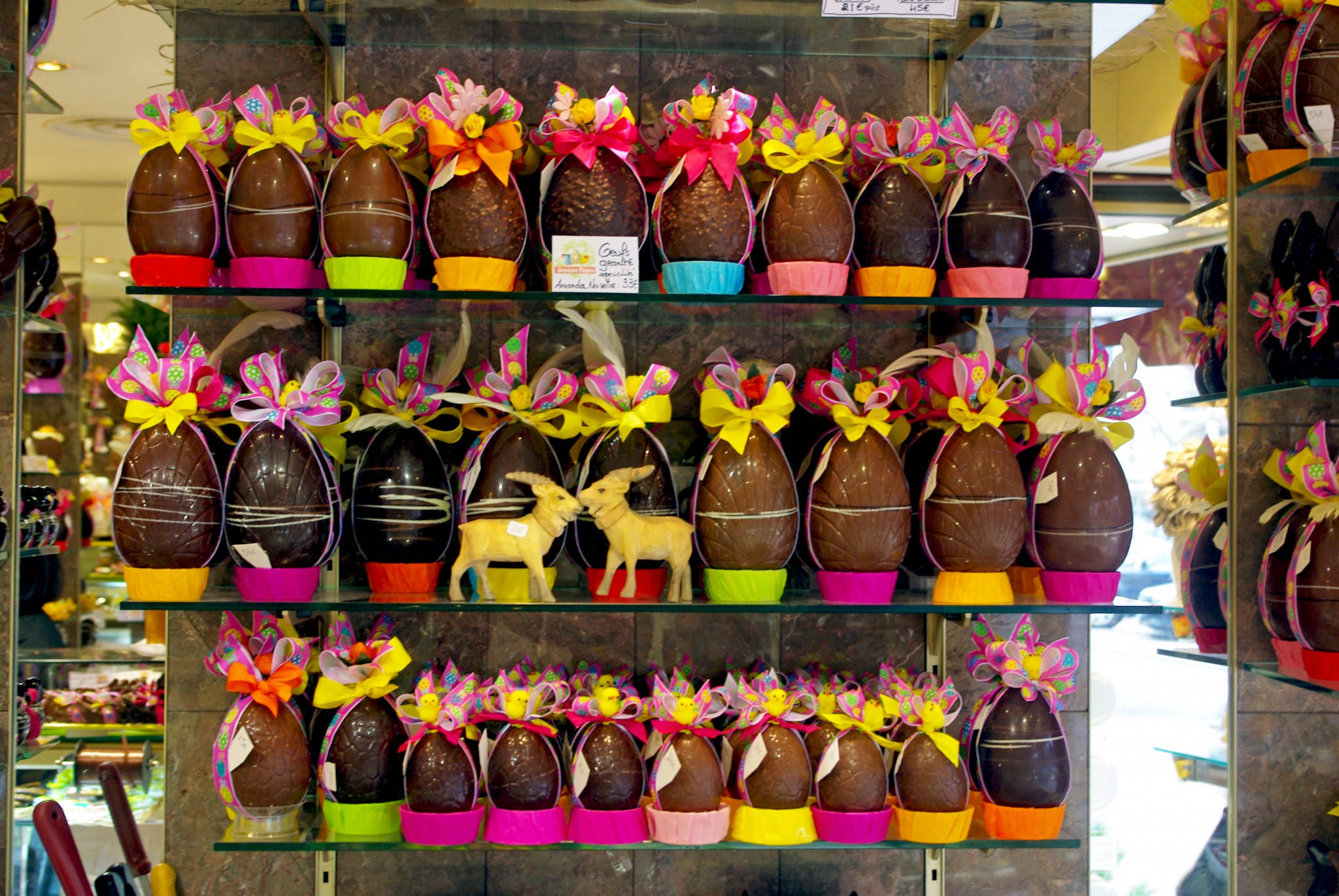
The consumption of chocolate in France
- The average consumption of chocolate in France amounts to 7.3 kg per year per inhabitant.
- This makes the French the sixth-largest consumer of chocolate in the world.
- The Germans remain in first place with an average per capita consumption of 11.1 kg, ahead of Switzerland (9.7), Estonia (8.8) and the United Kingdom (8.1).
- The chocolate-making profession represents nearly 120 companies in France, 90% of which are SMEs and 30,000 direct jobs (including 15,850 in industrial production).
- Last year, the average basket for a French person was 19.31 euros for a volume of 1.041kg of chocolate.
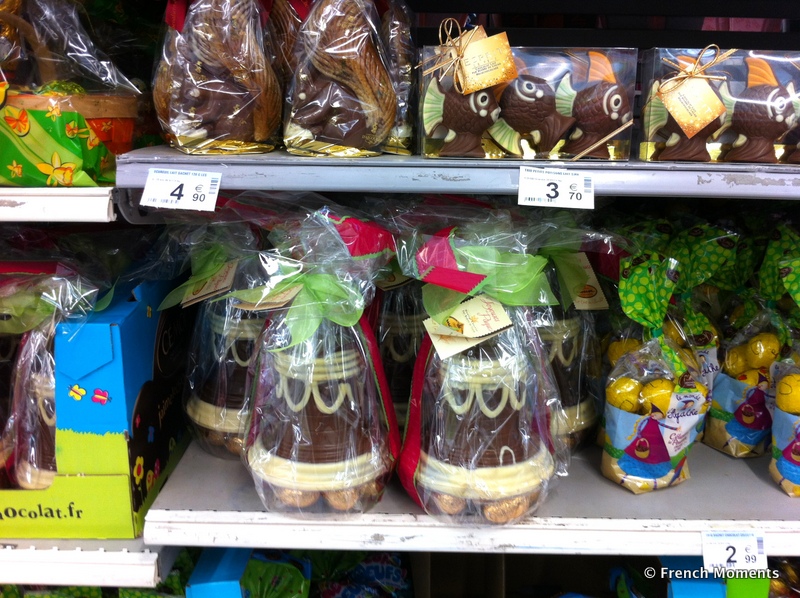
The favourite Easter chocolate of the French
- The French people have voted in favour of chocolate moulding (with sales reaching 4542 tonnes and €102 million) ahead of small chocolate eggs (3451 tonnes, €53,4 million) and chocolate-based confectionery (2825 tonnes, €51 million).
- Nevertheless, according to Nielsen, chocolate eggs are still popular as Easter approaches, the only time of the year when they sell more than traditional chicken eggs.
- In fact, the week before Easter alone accounts for almost 40% of the year’s sales of small chocolate eggs in hypermarkets and supermarkets, and 55% if you combine the two weeks before Easter.
- It should also be noted that 30% of French people consume dark chocolate. This is a record compared to an average of only 5% in Europe.
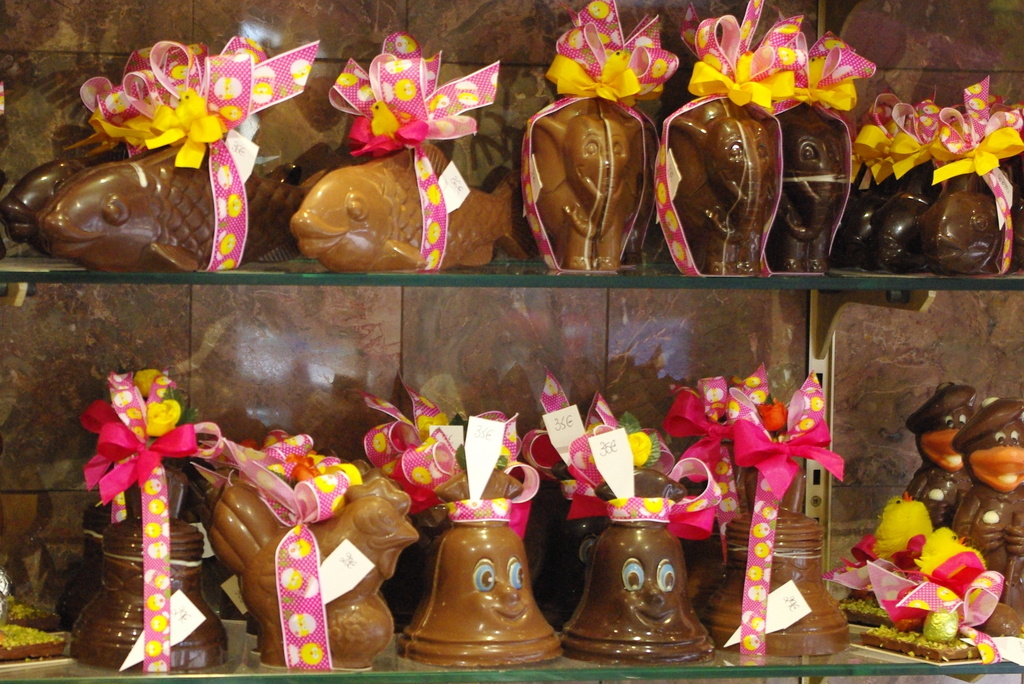
VAT and Chocolate in France
France also has the particularity of not applying the same VAT rates depending on the type of chocolate purchased:
- Dark chocolate, like cocoa beans and cocoa butter, is at a reduced rate of 5.5%.
- Except for filled bars/tablets and other large filled bites at the standard rate (20%).
- White and milk chocolate are also subject to the standard rate (20%).
- But “household milk chocolate”, intended to be melted down for use in pastries, which the law defines as “composed of a minimum of 30% cocoa solids”, is at 5.5%.

Exportation of French chocolate
France exports about 63% of its chocolate production.
Specialised French companies manufactured 552,650 tonnes of chocolate:
- 378,850 tonnes were sold to French and international consumers,
- 173,800 tonnes were sold to professionals who use chocolate as an ingredient (ice cream, biscuits and cakes…).
Easter music and songs in France
At Easter, the bells go ding dong… but apart from them, who else sings?
Strange as it may seem, Easter does not have as varied a repertoire of songs as Christmas.
Apart from the secular nursery rhymes recently composed for Easter, Eastertide has no iconic songs.
At Christmas, Santa Claus is the subject of several songs. The same cannot be said of the Easter bunny (or worse, Easter bells), which are even more mysterious and mute.
Easter music in churches
However, this is not entirely accurate for the Catholic and Protestant churches, which enjoy an impressive repertoire of religious hymns, from oratorios to contemporary songs.
Little selection:
Chant joyeux pour le temps de Pâques, by Marc-Antoine Charpentier
Messe solennelle de Pâques (Solemn Easter Mass), by Charles Gounod
A Toi la gloire, ô Ressuscité (Thine Be the Glory, Risen Conquering Son), by George Frideric Handel
La croix seule me suffit, by Hillsong en Français
Sayings and proverbs about Easter in France
Proverbs
Celui qui doit être pendu à Pâques trouve le carême bien court.
Proverbe basque
Whoever is to be hanged at Easter finds Lent very short.
Basque proverb

Noël au balcon, Pâques au tison.
Proverbe français
Christmas on the balcony, Easter on the firebrand.
French proverb

Sayings
Quand il pleut le jour de Pâques, il pleut pendant quarante jours.
Dicton français
When it rains on Easter Day, it rains for forty days.
French saying

Taille le Vendredi Saint, t’auras beaucoup de raisin.
Dicton français
Prune on Good Friday, you’ll have lots of grapes.
French saying

Le Vendredi Saint, s’il pleut, le bœuf rit, le cochon pleure.
Dicton français
On Good Friday, if it rains, the ox laughs the pig cries.
French saying

S’il pleut le Vendredi Saint, la gelée voit sa fin.
Dicton français
If it rains on Good Friday, the frost is over.
French saying

Qui coule la lessive le Saint vendredi, veut la mort de son mari.
Dicton français
Who runs the washing on Good Friday, wants her husband dead.
French saying

Jokes and others
A Pâques, le chasseur tua le lapin de Pâques ! Quelle cloche !
Didier Hallépée, A mes enfants (2013)
At Easter, the hunter killed the Easter bunny (rabbit)! What a bell (an idiot)!
Didier Hallépée, To my children (2013)

Est-ce que la maman d’un oeuf de Pâques c’est une poule en chocolat ?
Parole d’enfant
Is the mother of an Easter egg a chocolate hen?
A child’s word

Croix Egale Amour ✝ = ♥︎
Cross Equals Love
These three words signposts and hashtags started as simple Easter branding for the Easter services of a Sydney-based church in 2008.
Easter in France: English-French Vocabulary
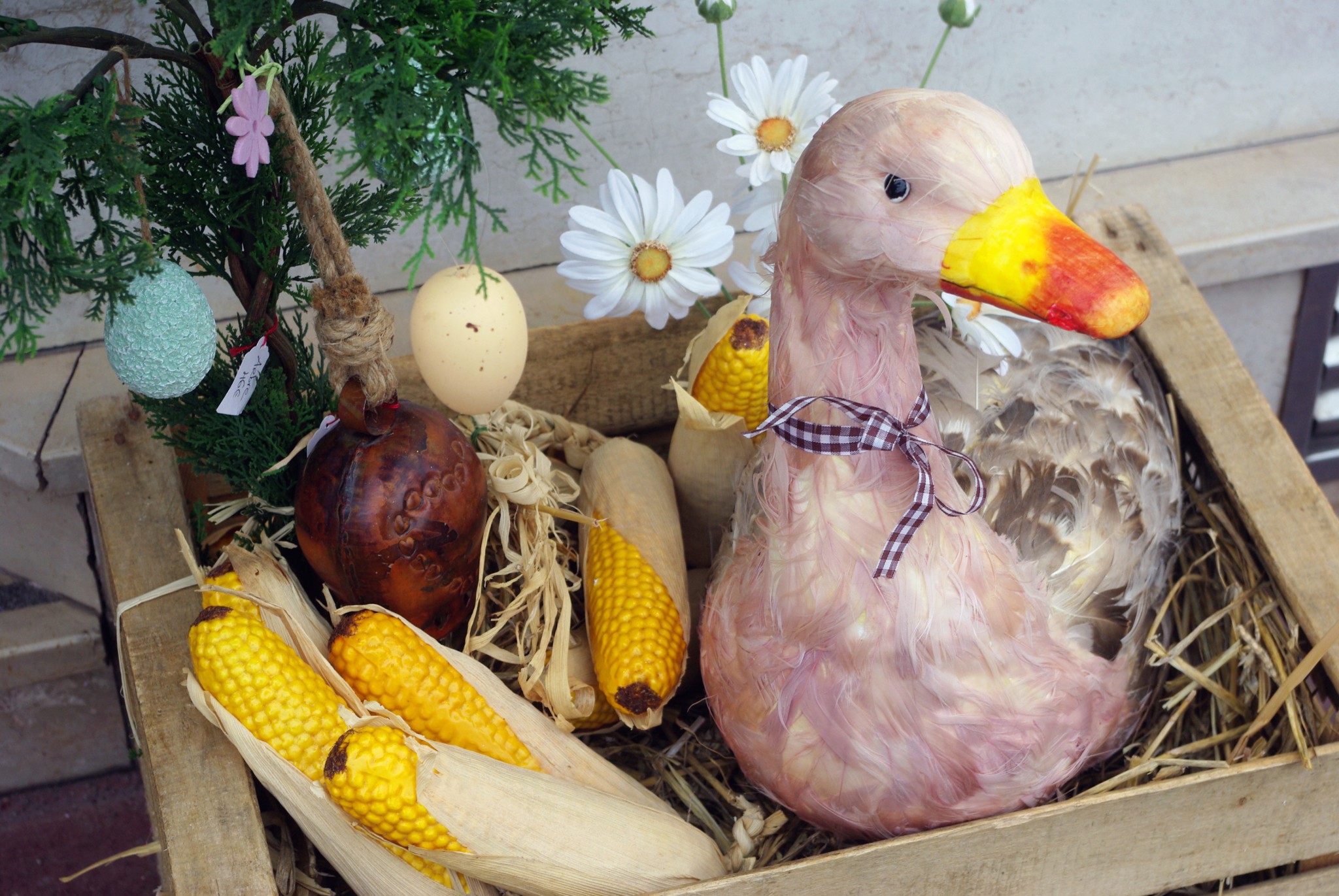
(f) for féminin, (m) for masculin, (adj) for adjective and (v) for verbs
- bell = cloche (f)
- bunny = lapin (m)
- to celebrate = célébrer (v)
- chocolate = chocolat (m)
- chrism mass = messe chrismale (f)
- crucifixion = crucifixion (f)
- to decorate = décorer (v)
- decoration = décoration (f)
- Easter = Pâques (f)
- Eastertide = Temps pascal (m)
- egg = œuf (m)
- egg hunt = chasse aux œufs (f)
- Good Friday = Vendredi Saint (m)
- hare = lièvre (m)
- Holy Week = Semaine Sainte (f)
- Holy Saturday = Samedi Saint (m)
- Jesus-Christ = Jésus-Christ
- lamb = agneau (m)
- lent = carême (m)
- mass = messe (f)
- Easter market = marché de Pâques (m)
- Maundy Thursday = Jeudi saint (m)
- Palm Sunday = dimanche des Rameaux (m)
- Passover = Pâque juive (f)
- nest = nid (m)
- Easter Octave = Octave de Pâques (f)
- Passion = Passion (f)
- pope = pape (m)
- resurrection = résurrection (f)
- spring = printemps (m)
- stork = cigogne (f)
- Sunday = dimanche (m)
- tradition = tradition (f)
- Easter Triduum = Triduum pascal (m)
- Way of the Cross = chemin de croix (m)
Find out more about Easter in France!
Here’s a selection of websites and blogs to learn more about Easter in France:
- The significance of Good Friday in France.
- The season of Spring in France.
- All the holidays and celebrations in France.
- The traditions and celebrations of Easter in Alsace [in French].
- The article on Wikipedia on Easter.
Pin it for later
Like what you read? Pin it on Pinterest:
